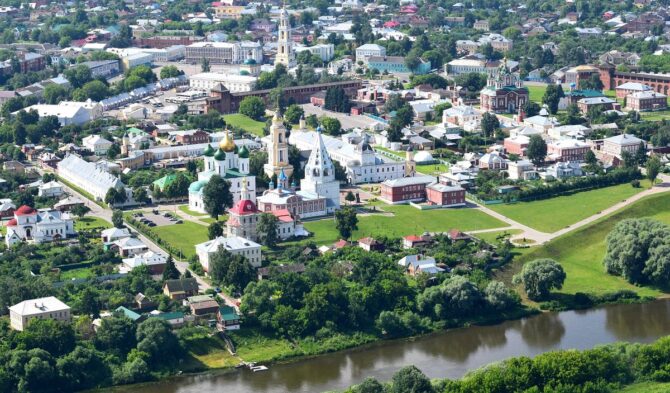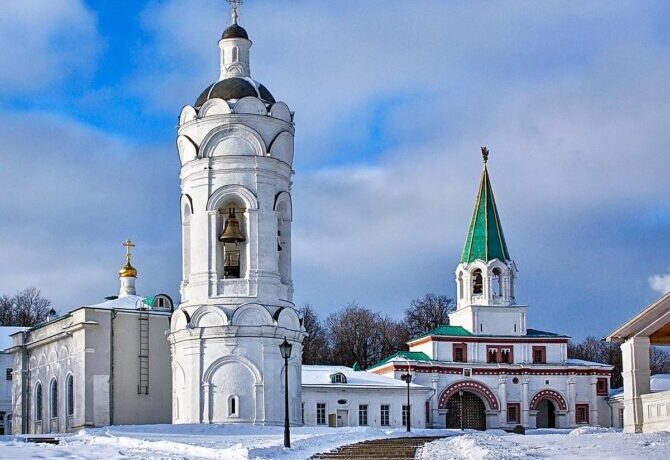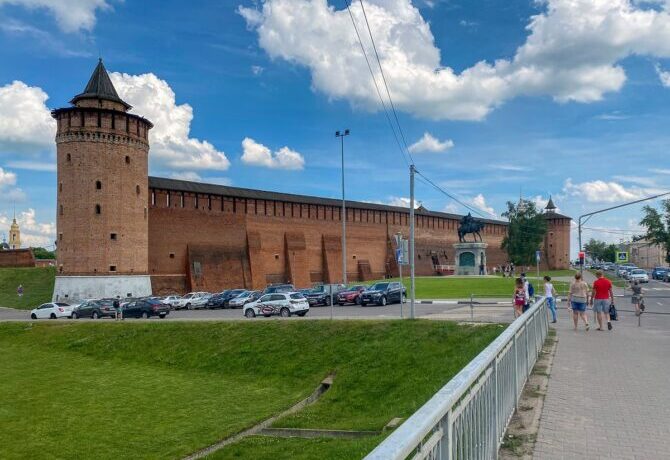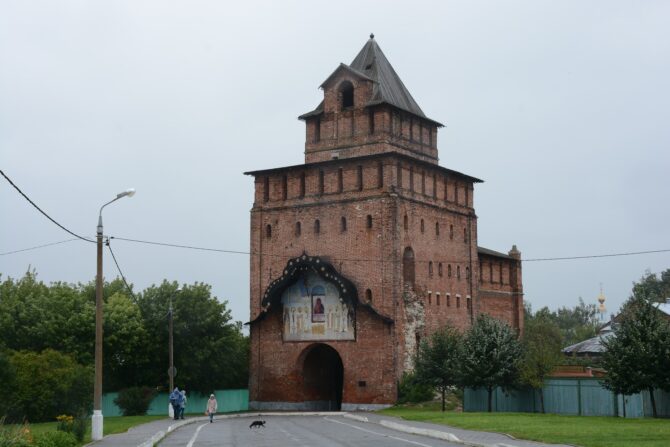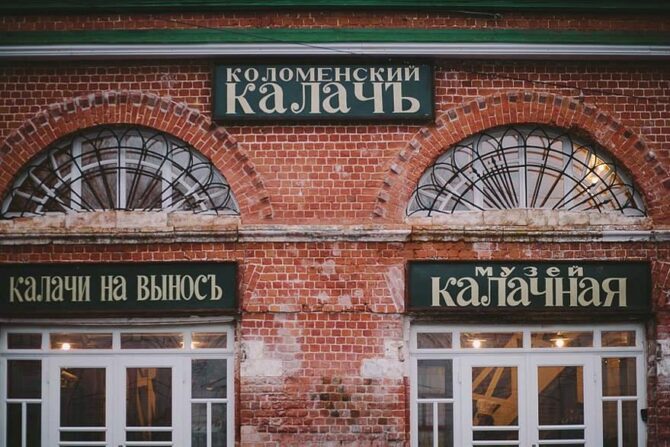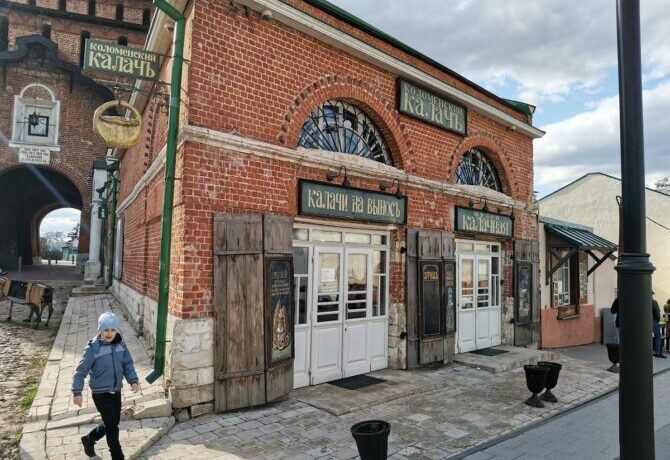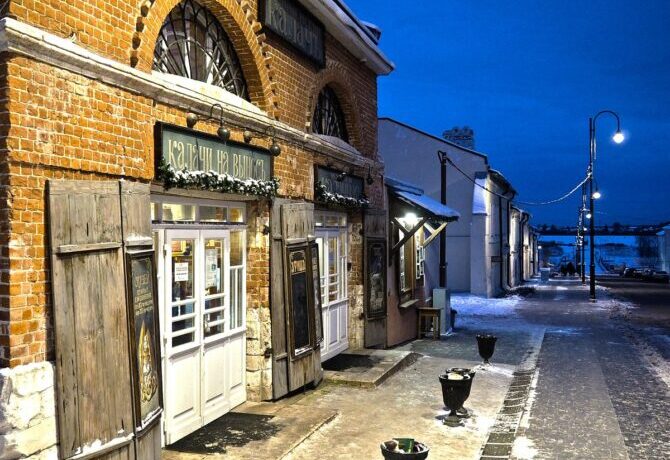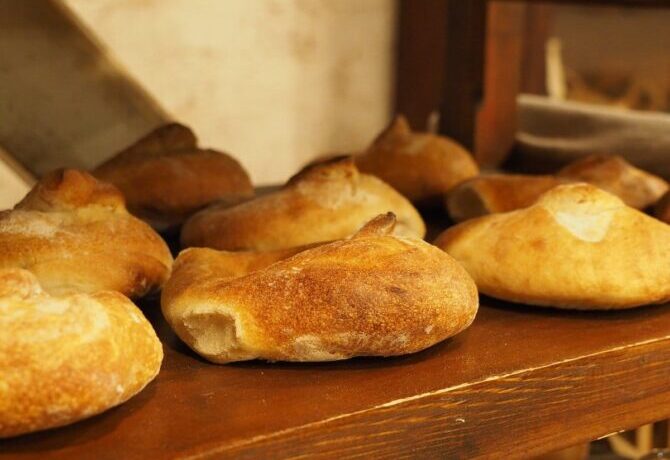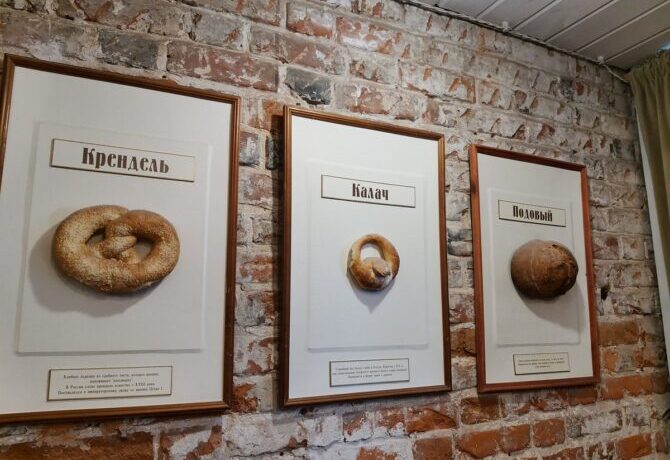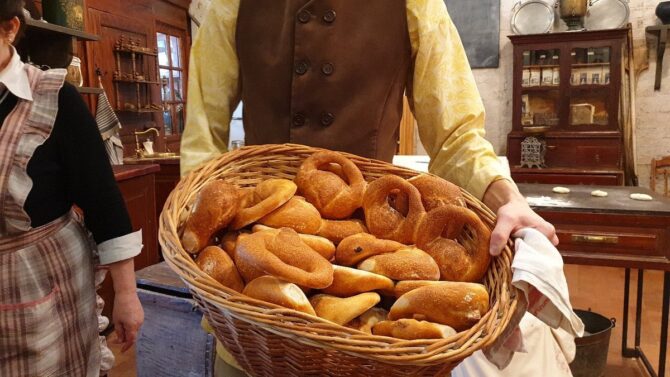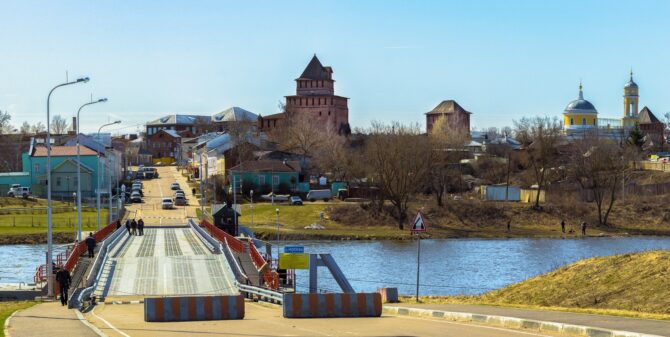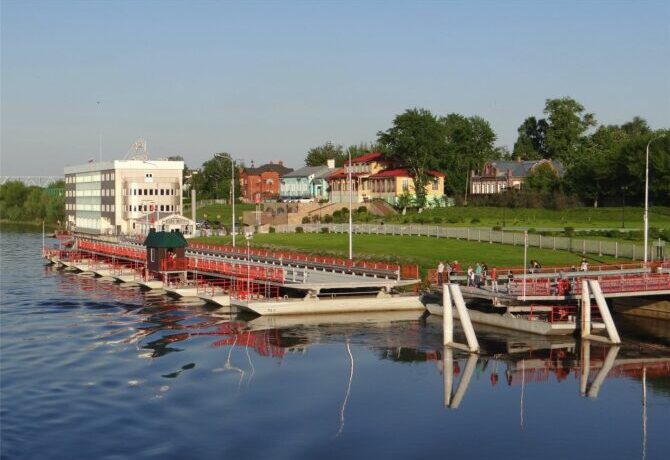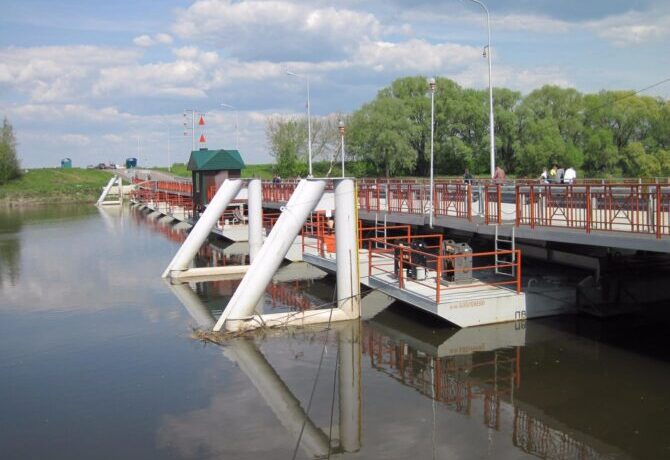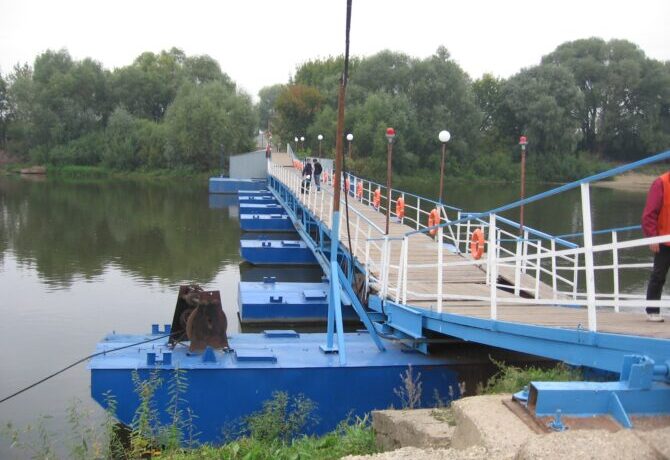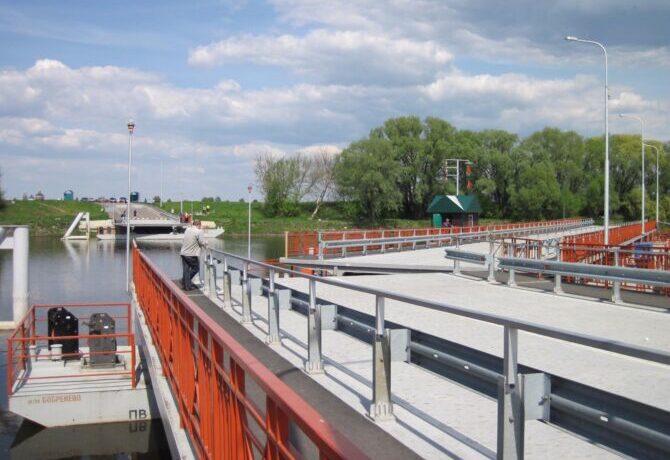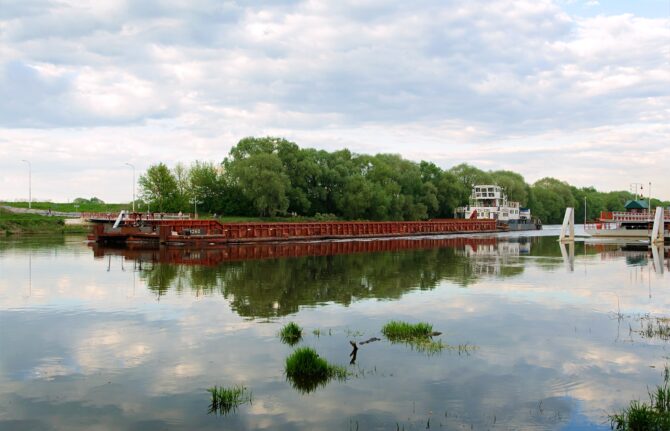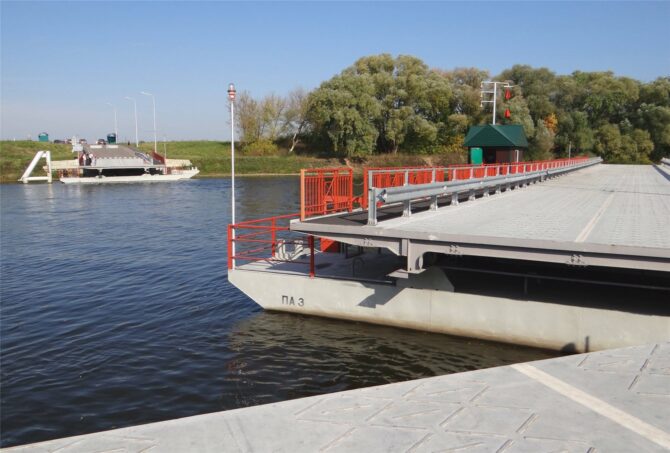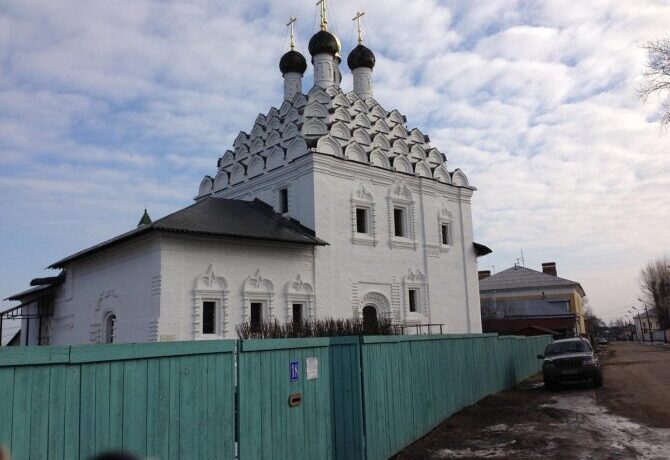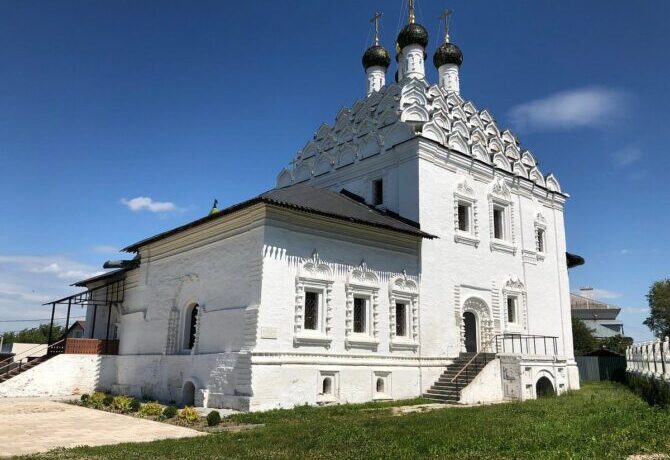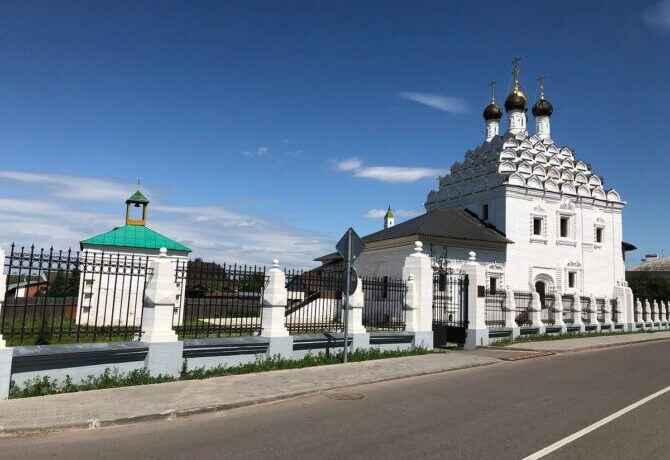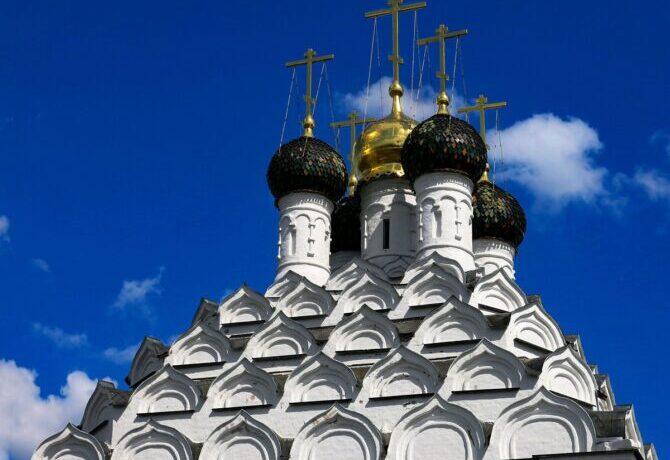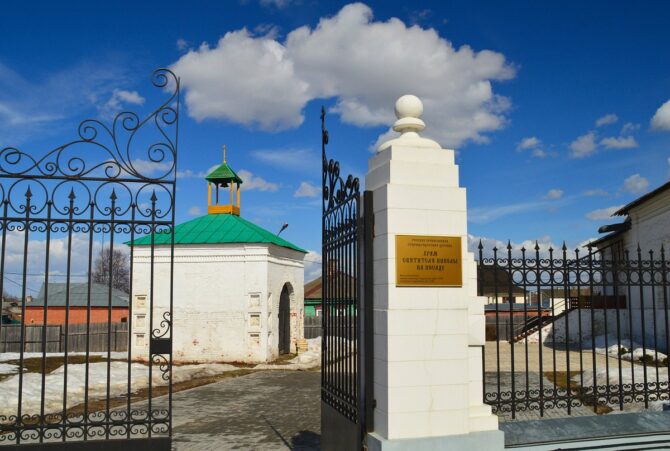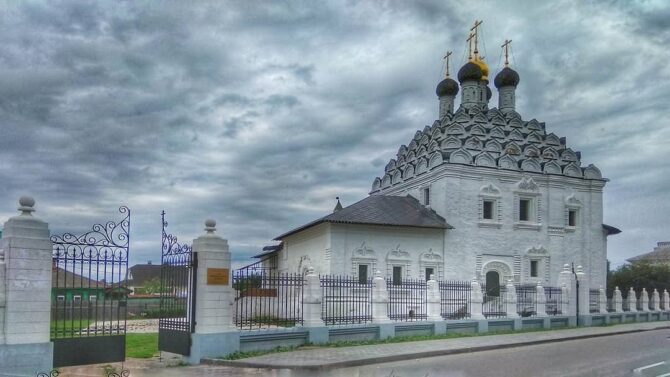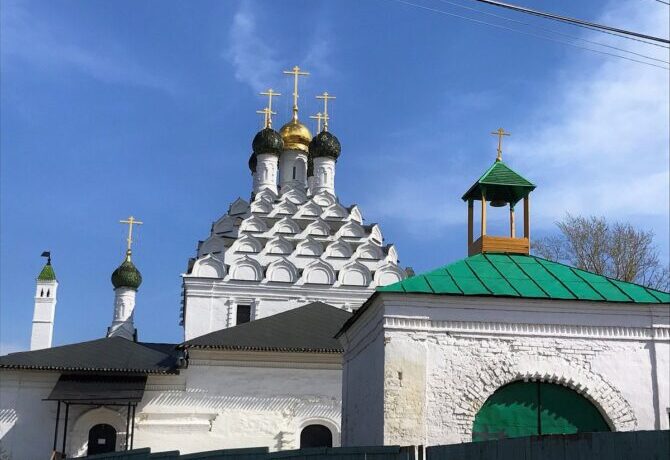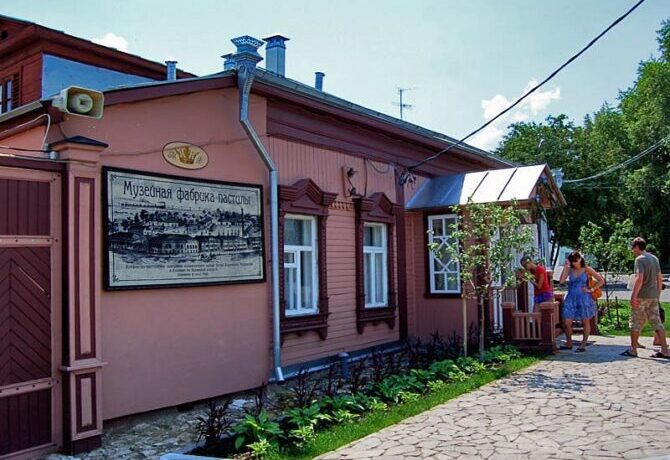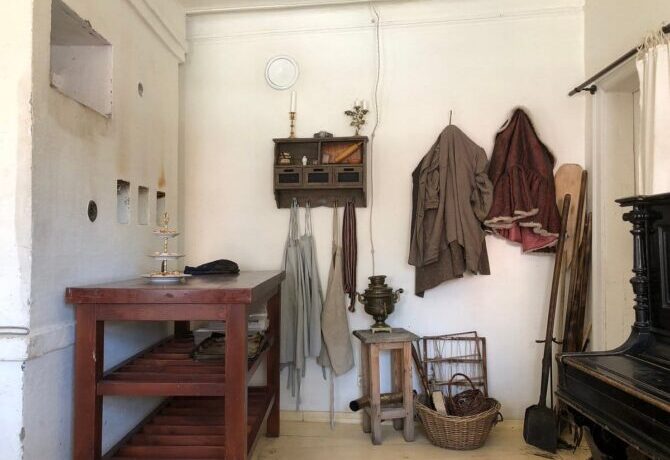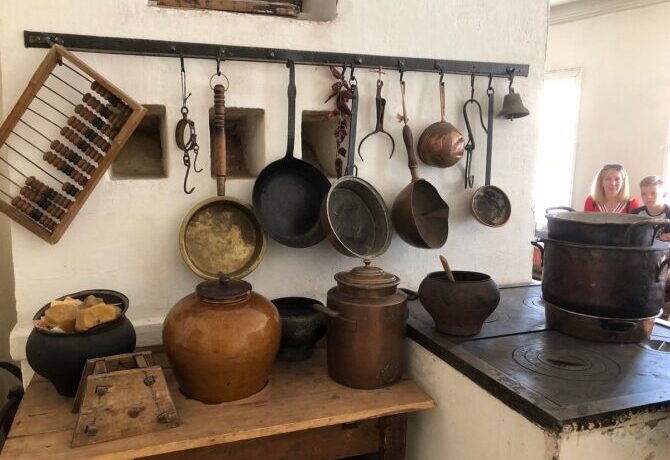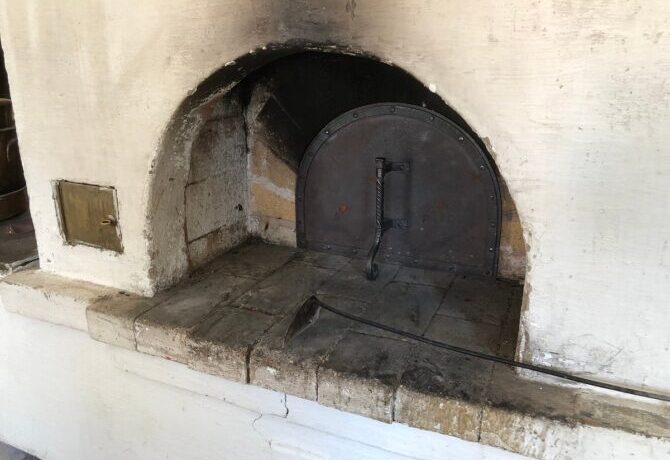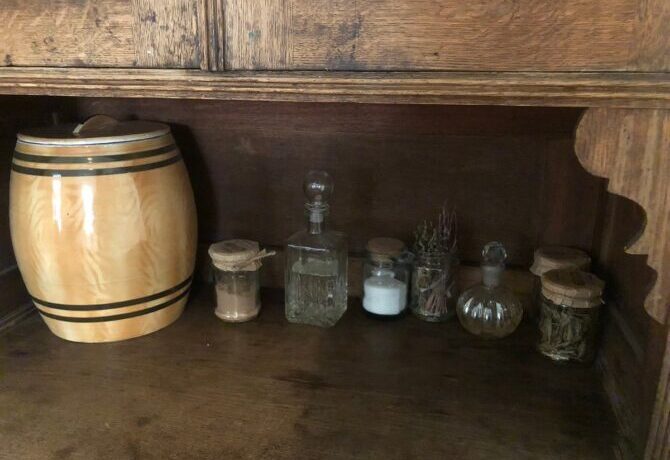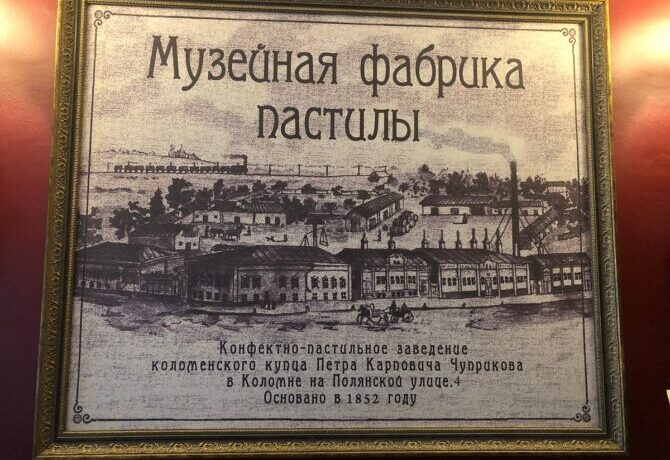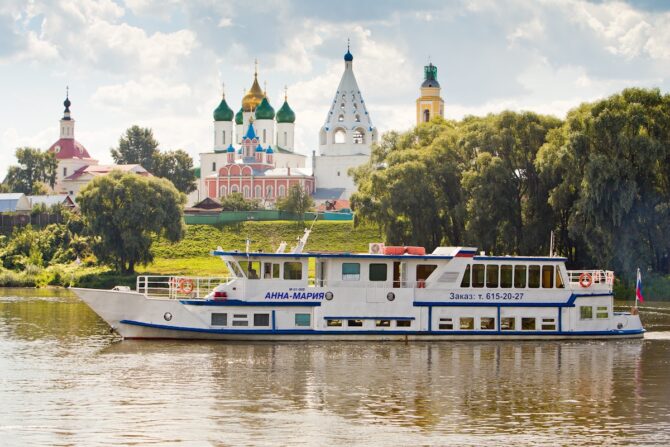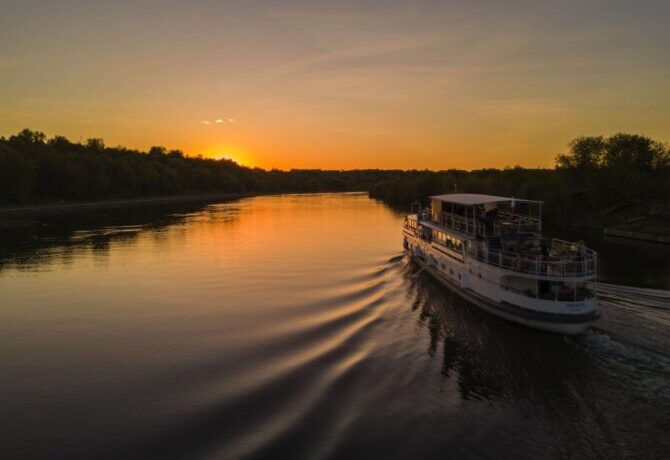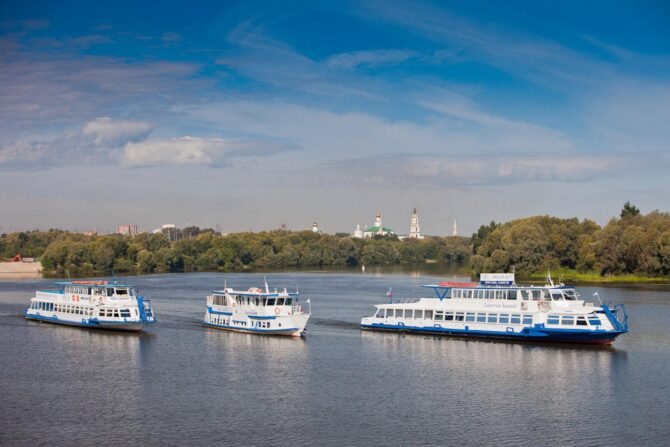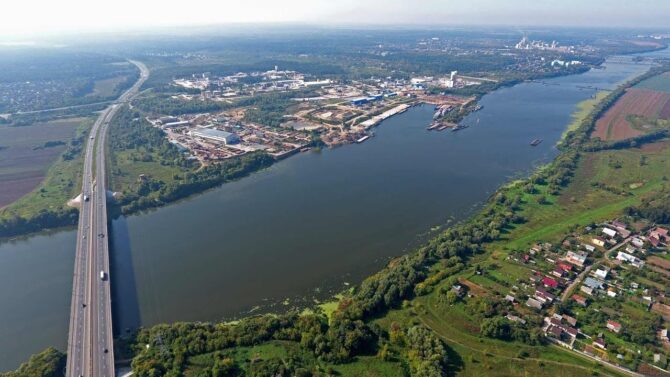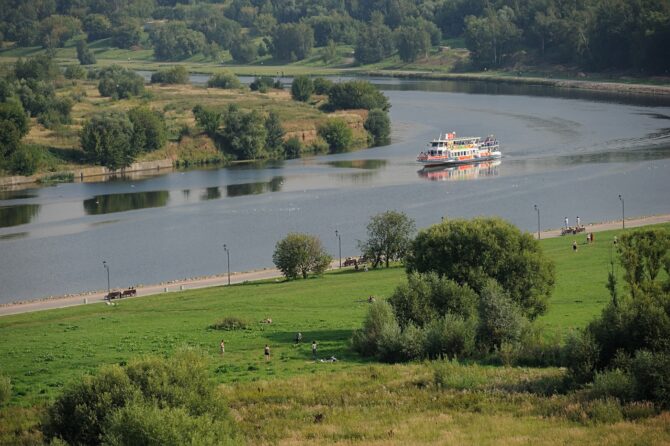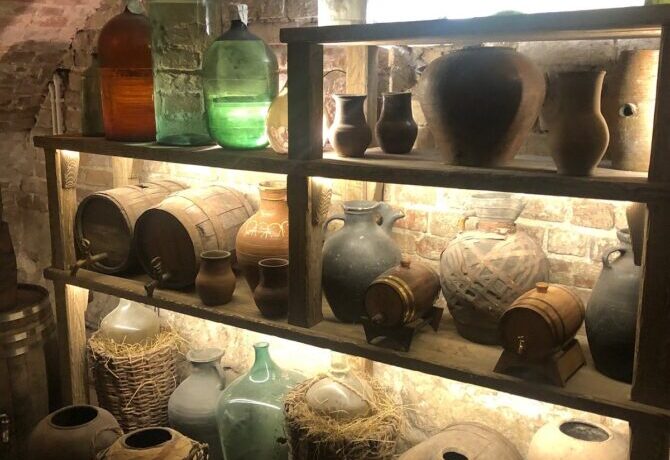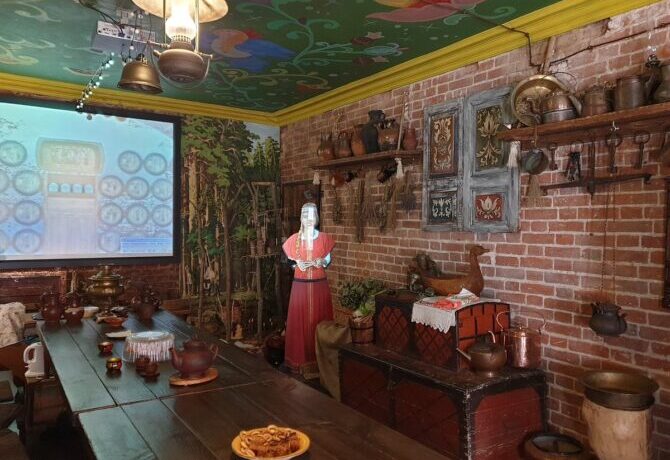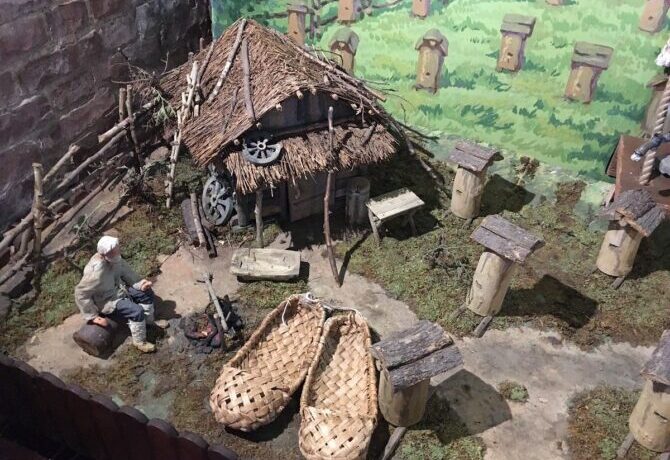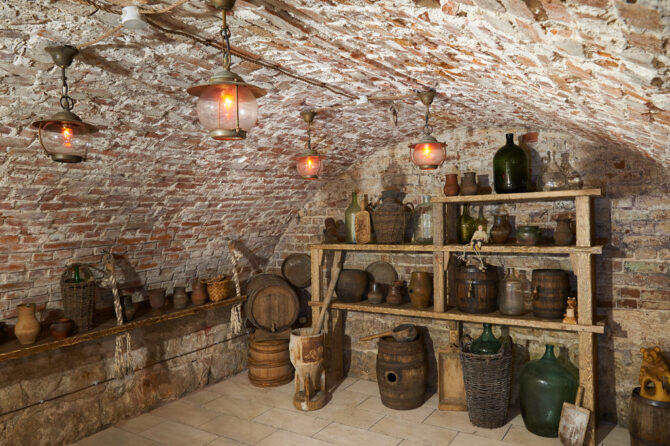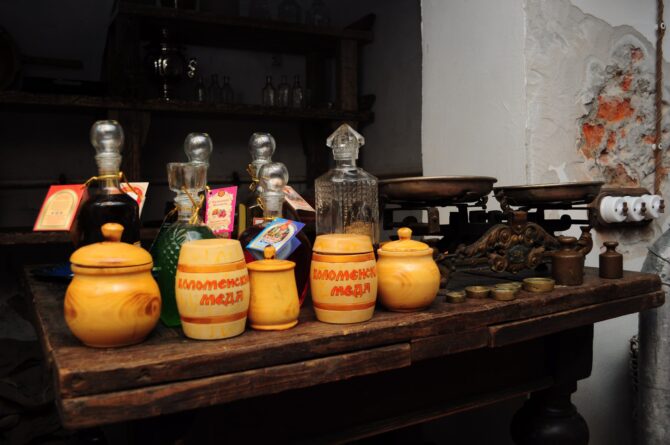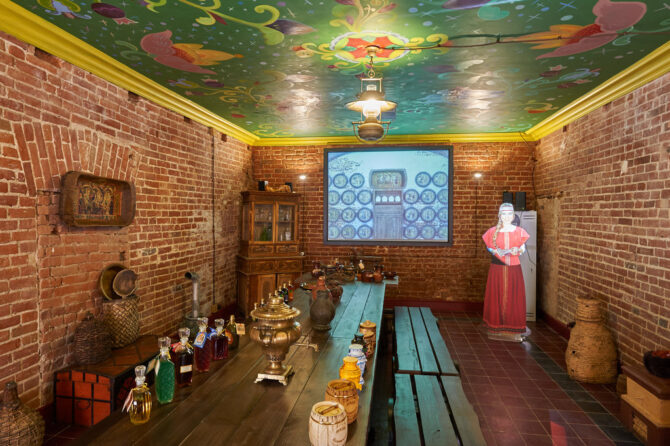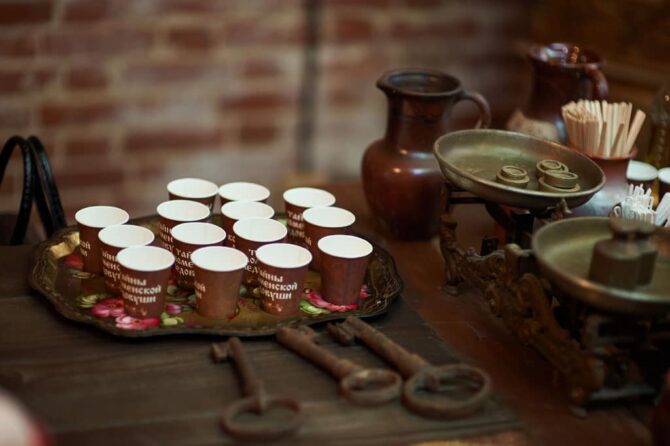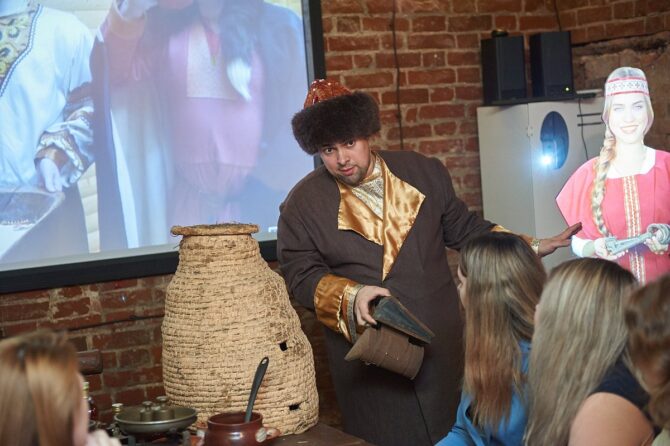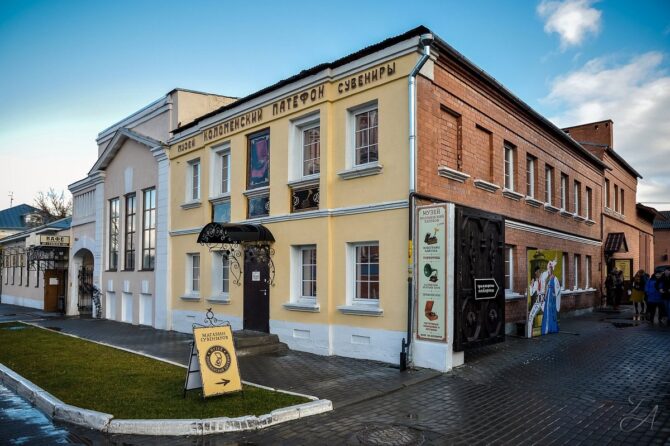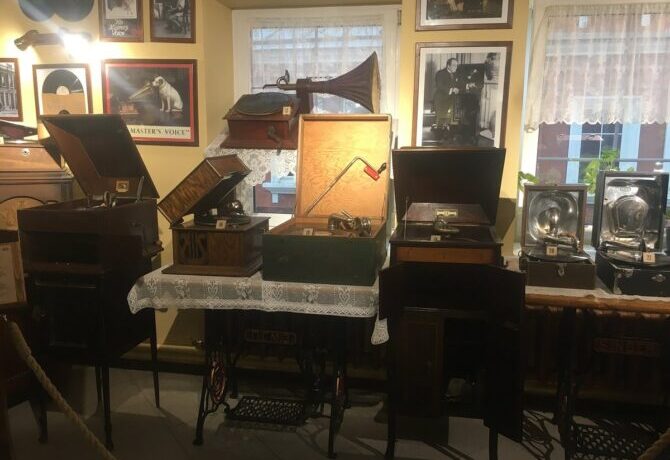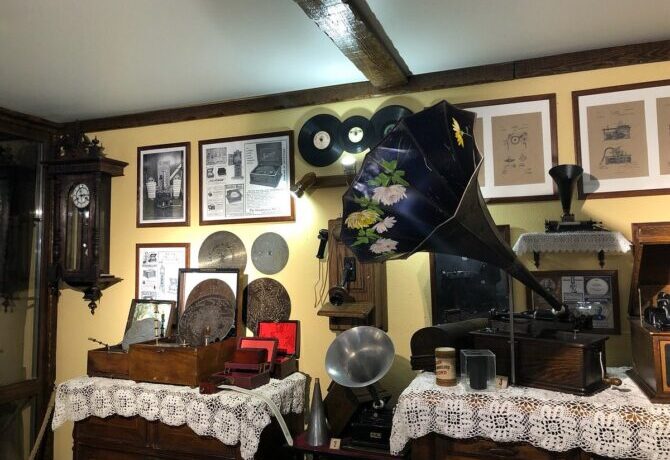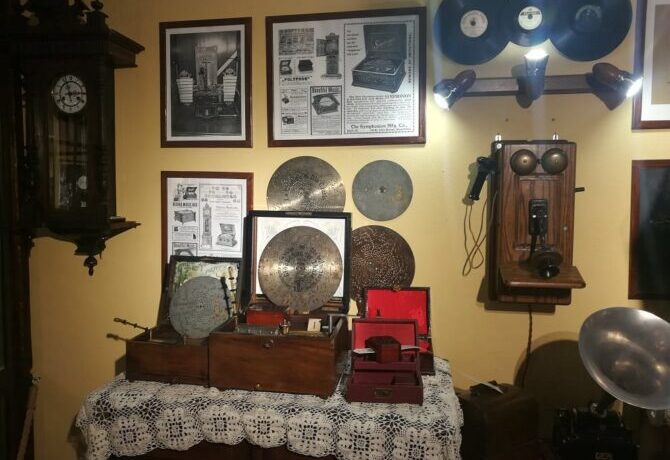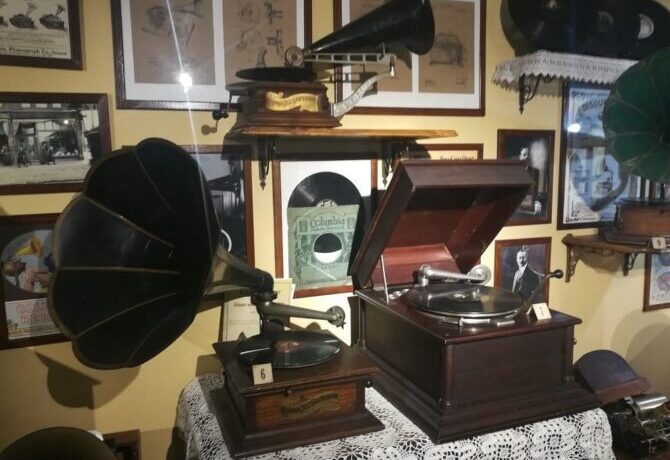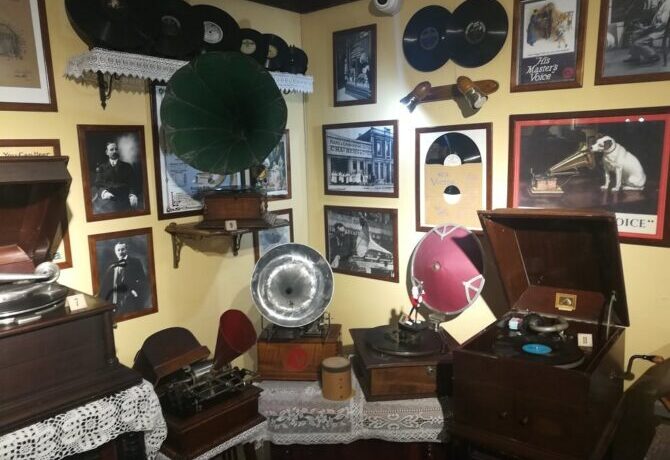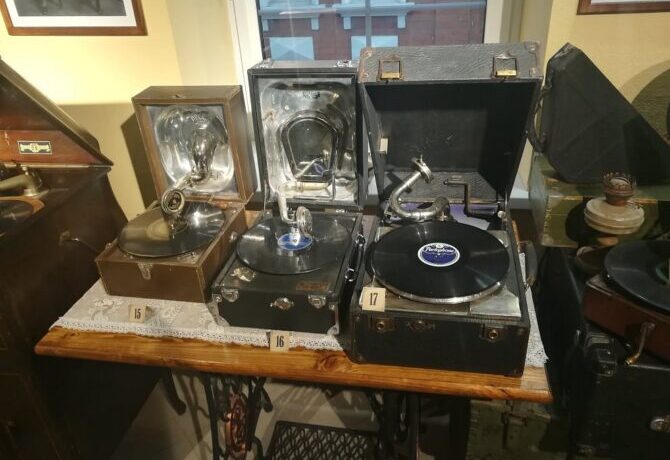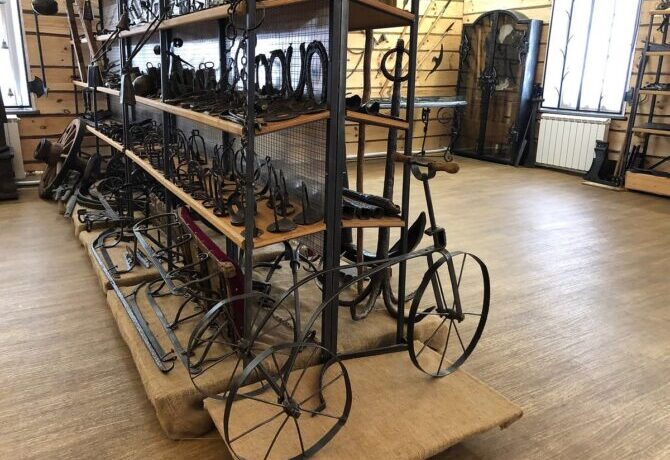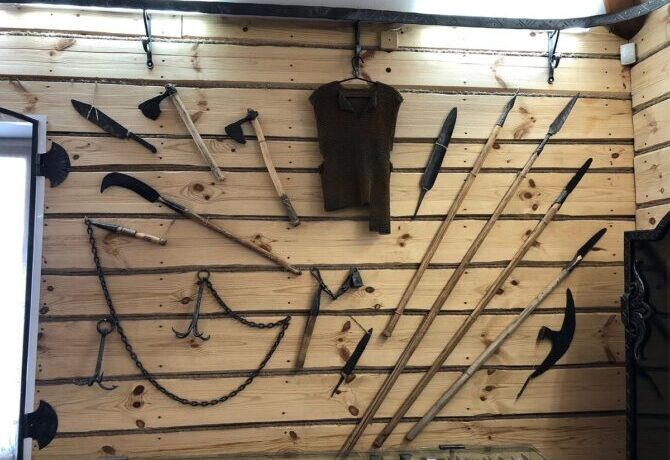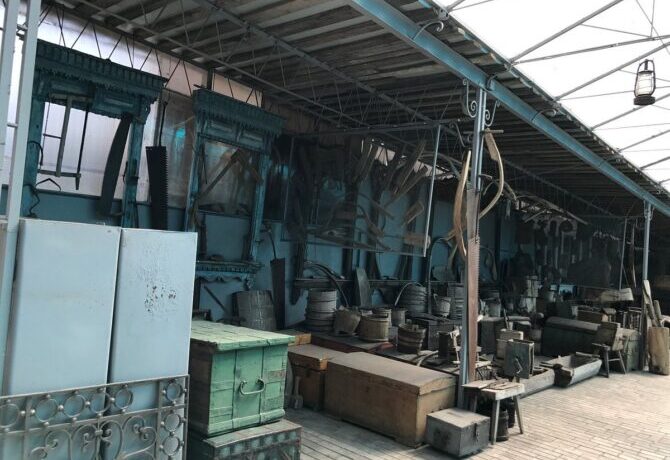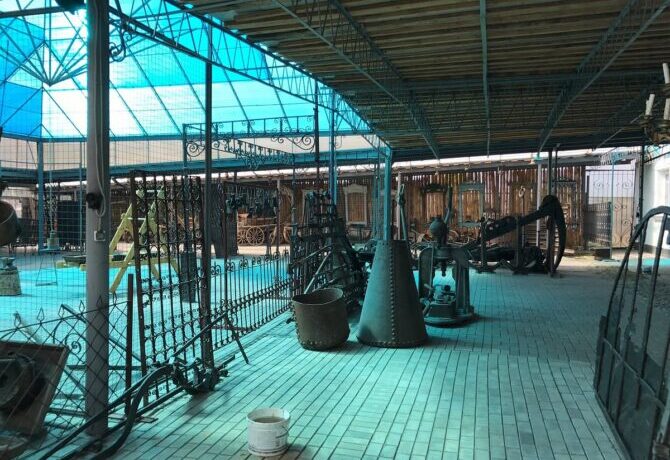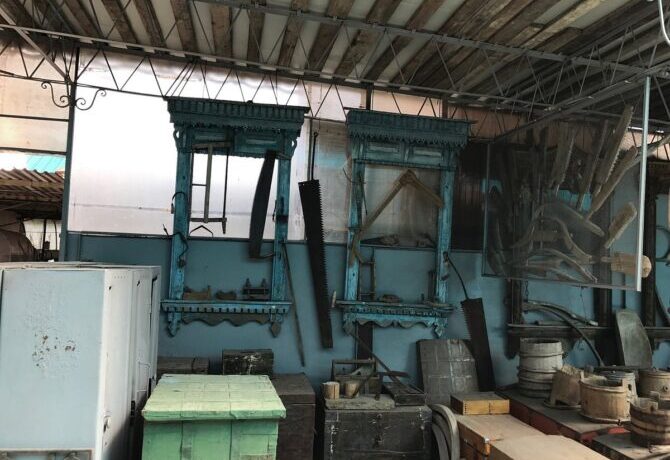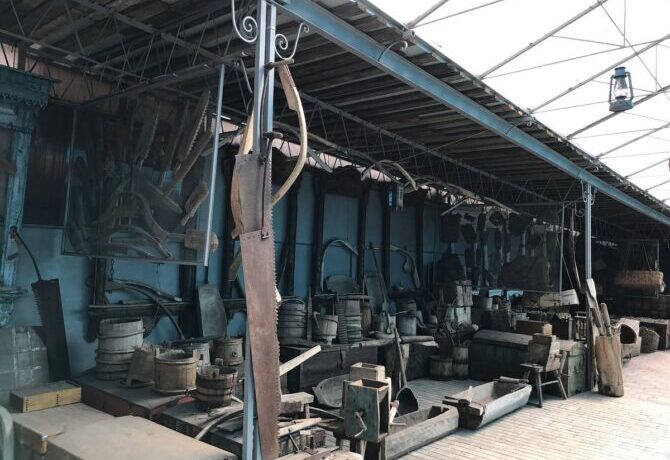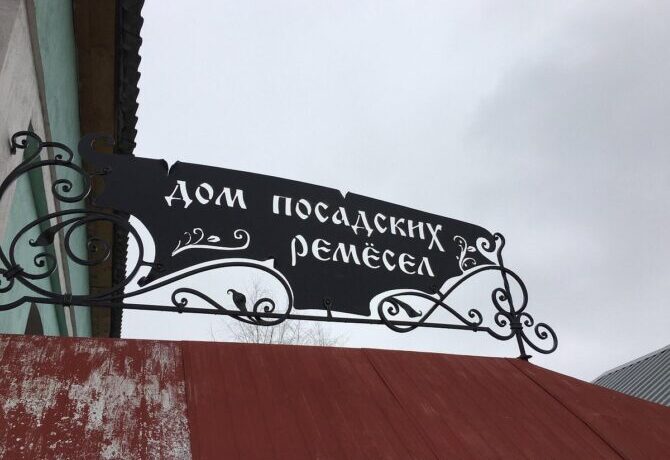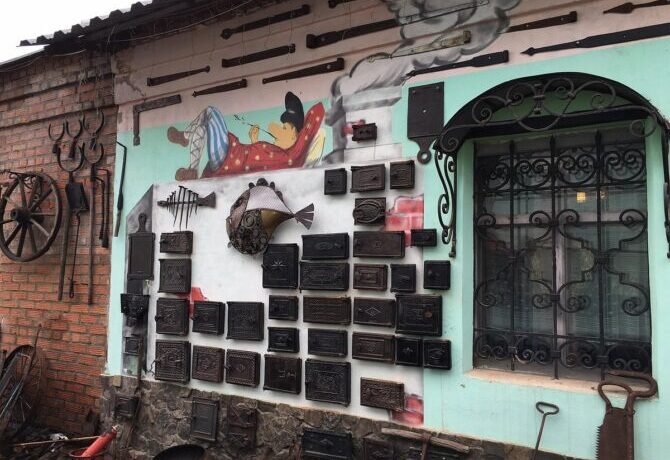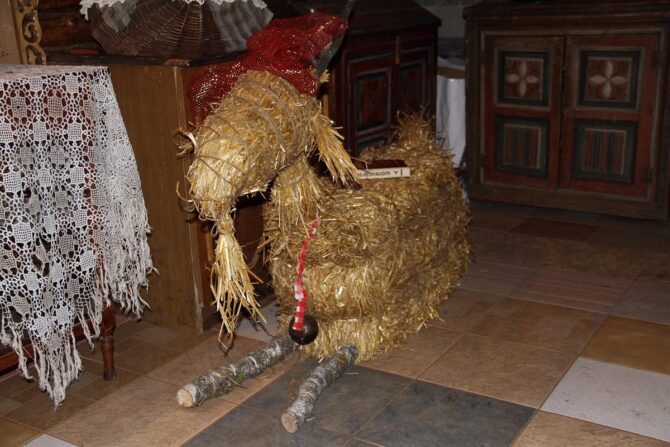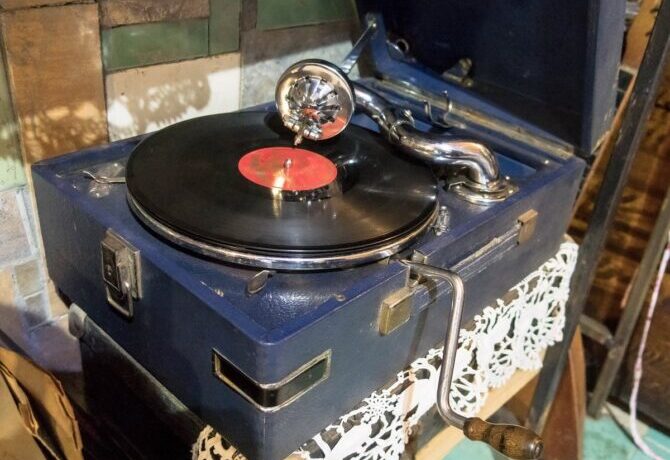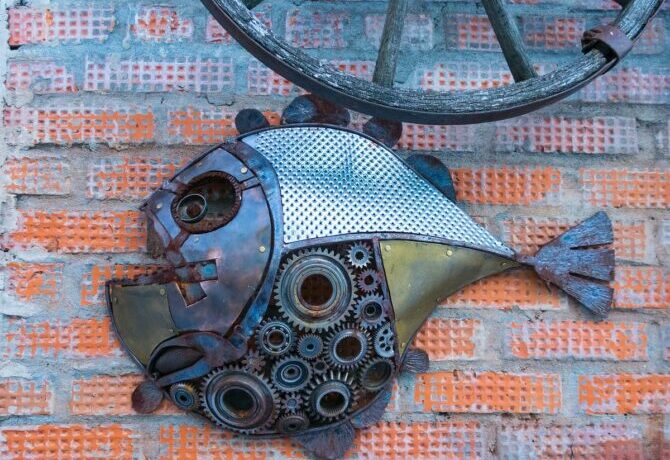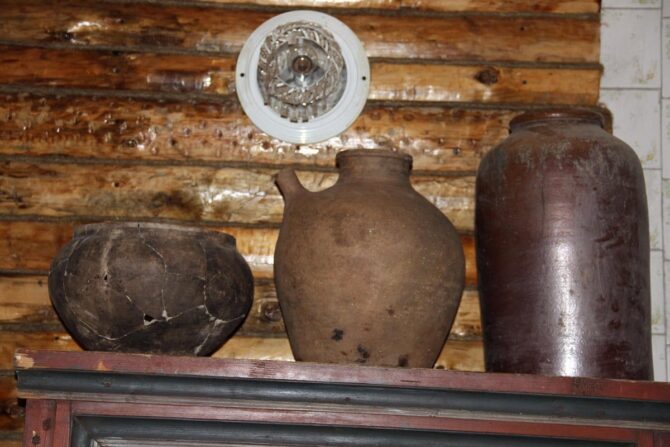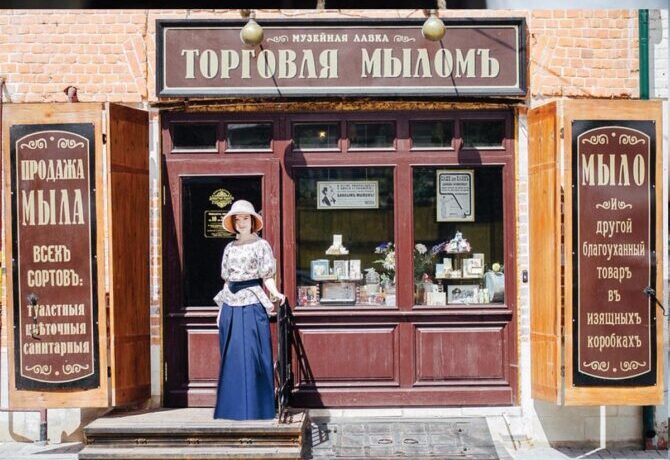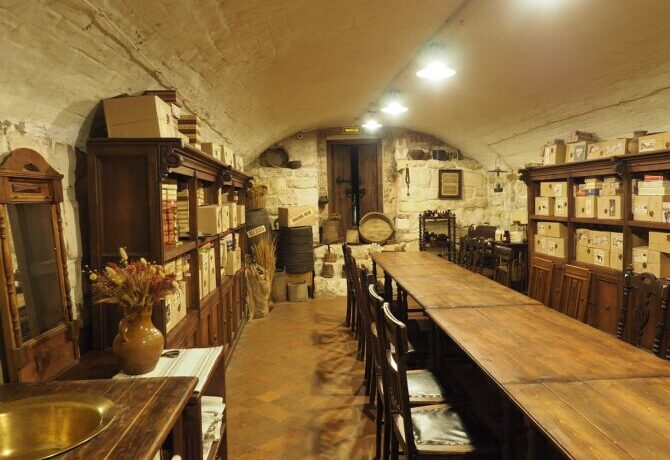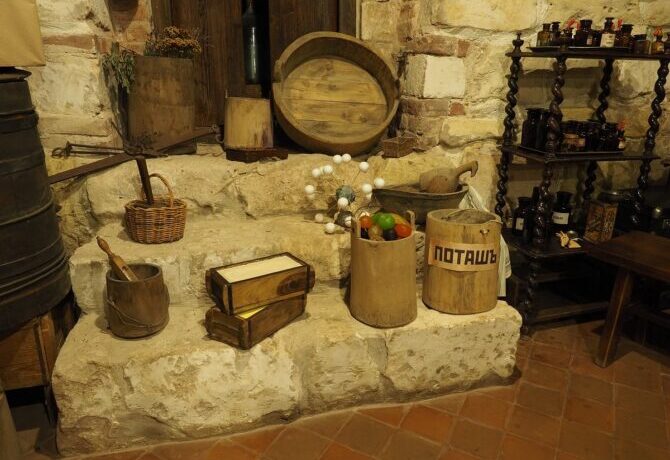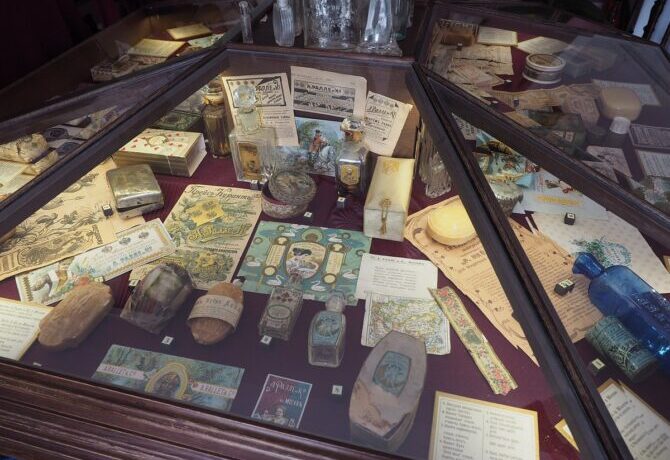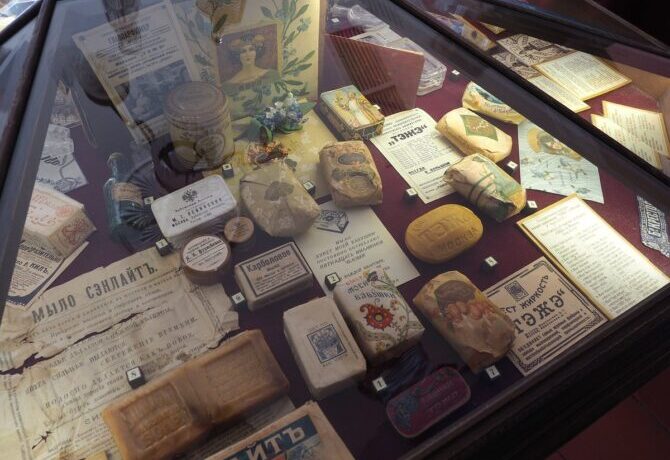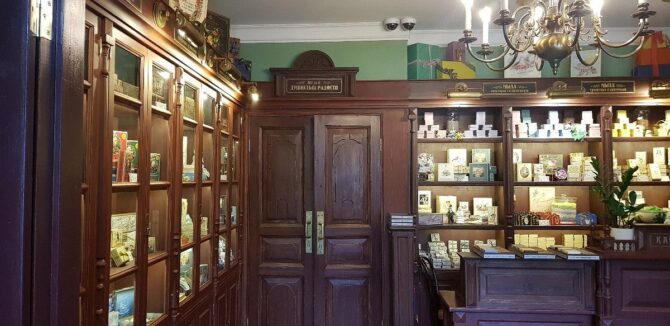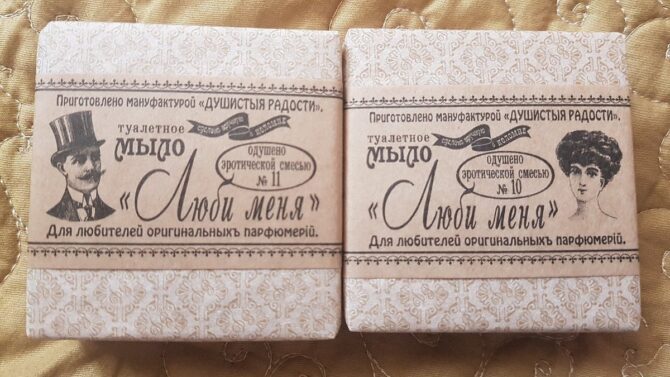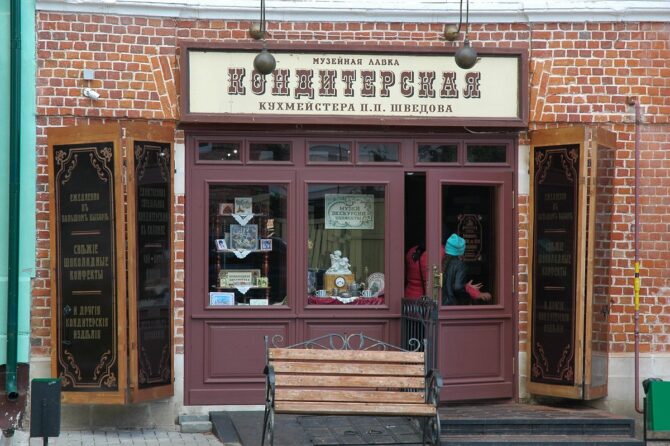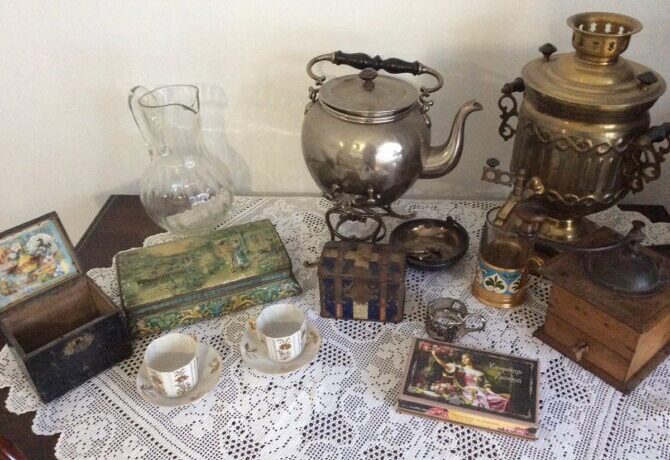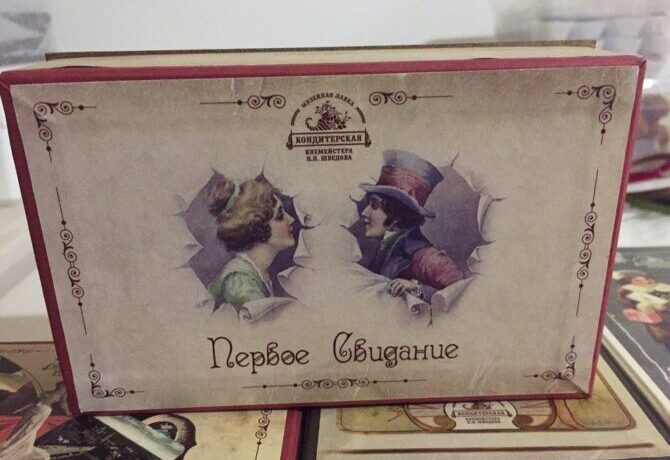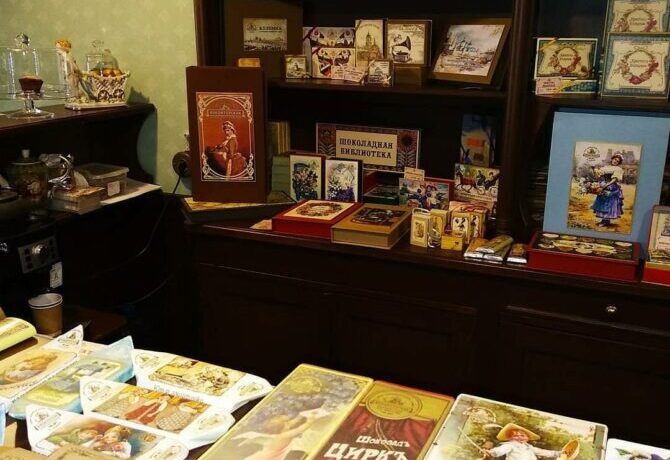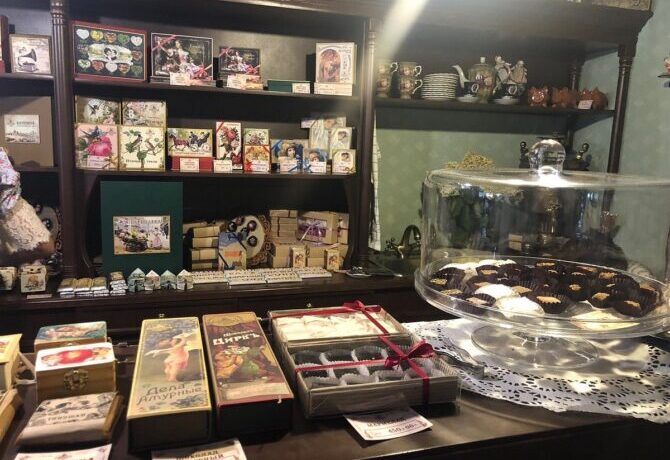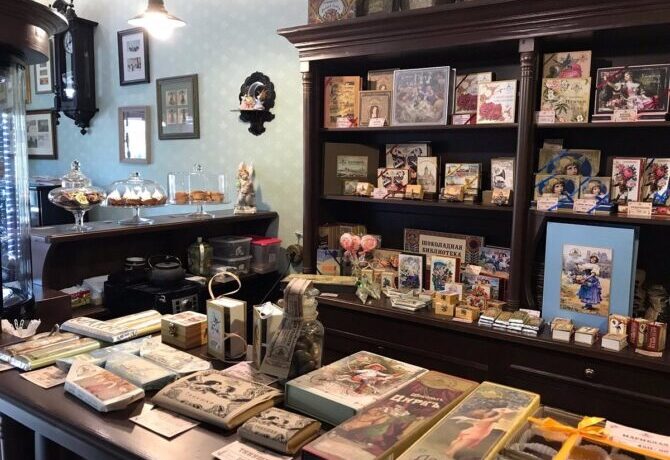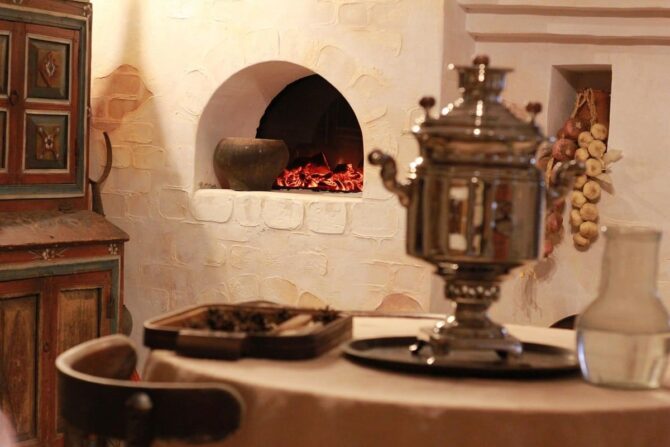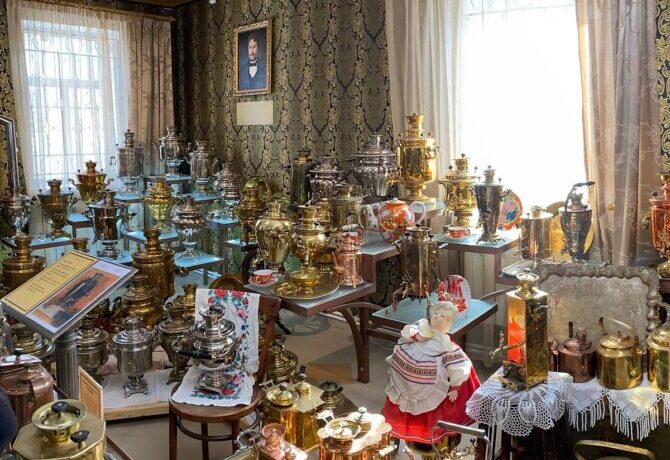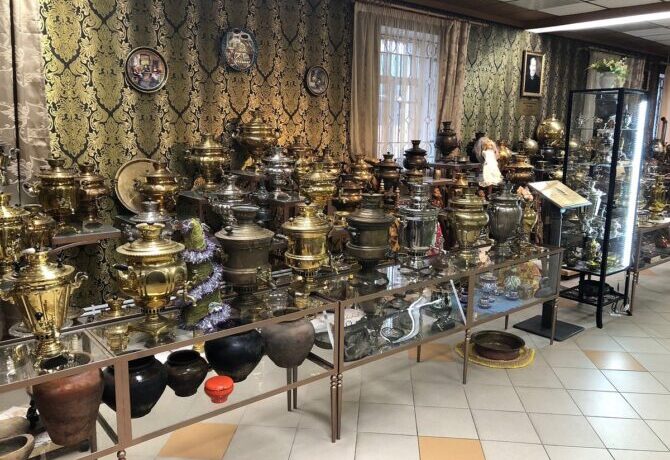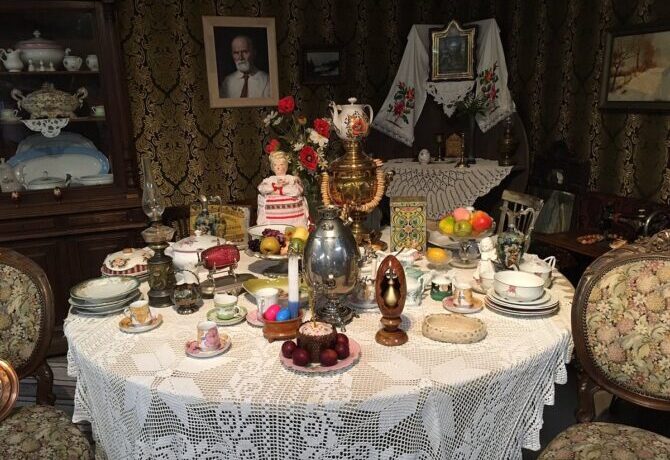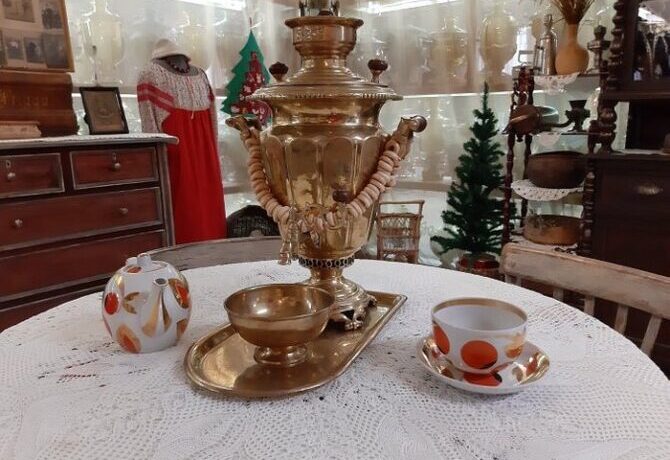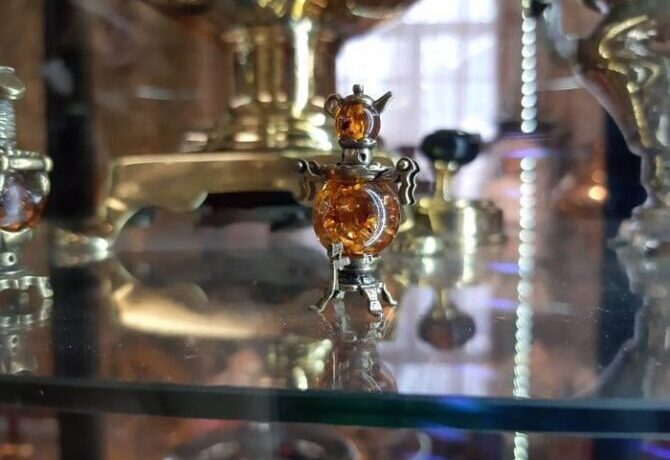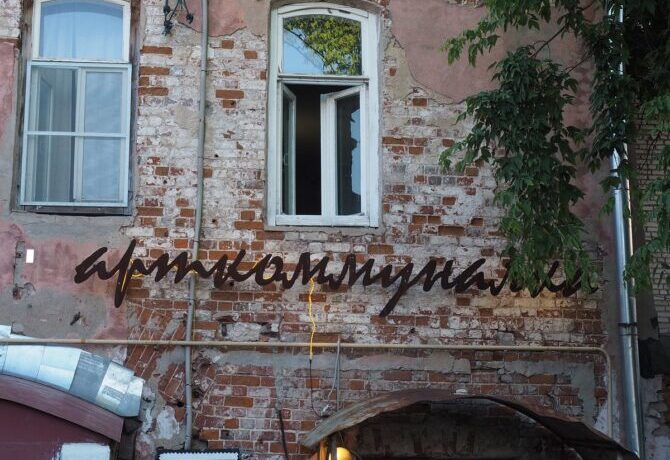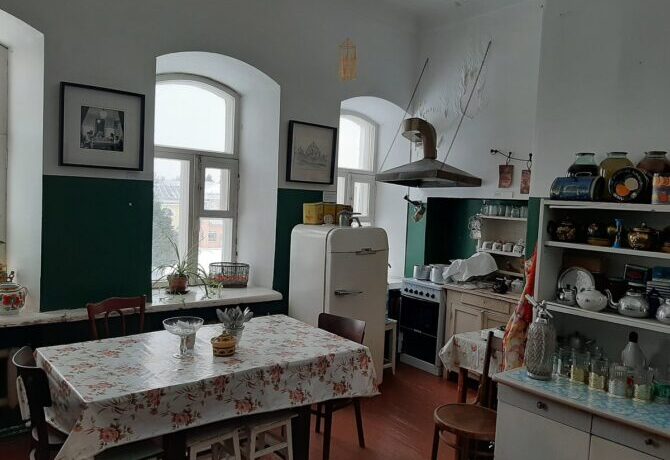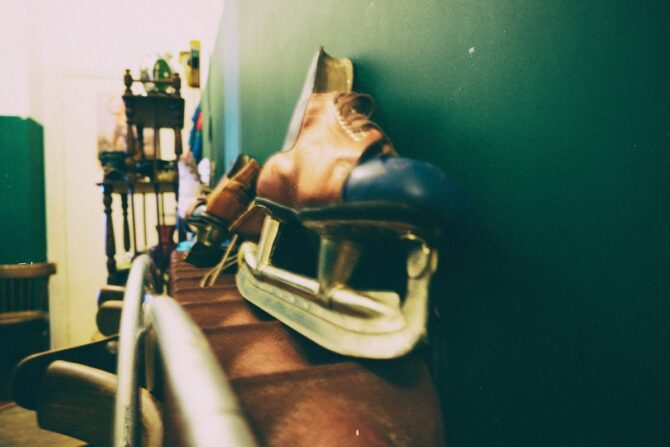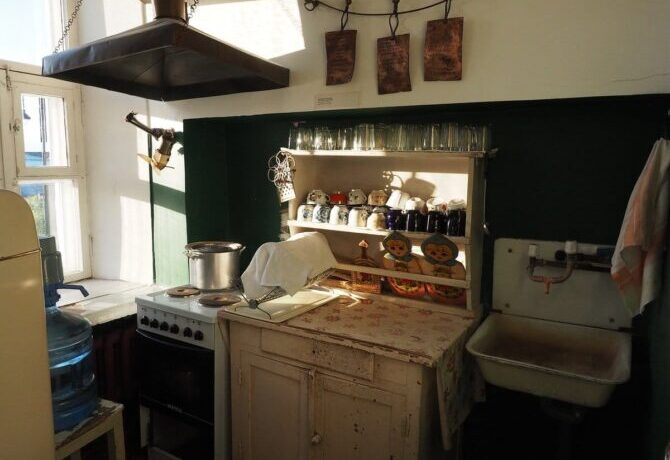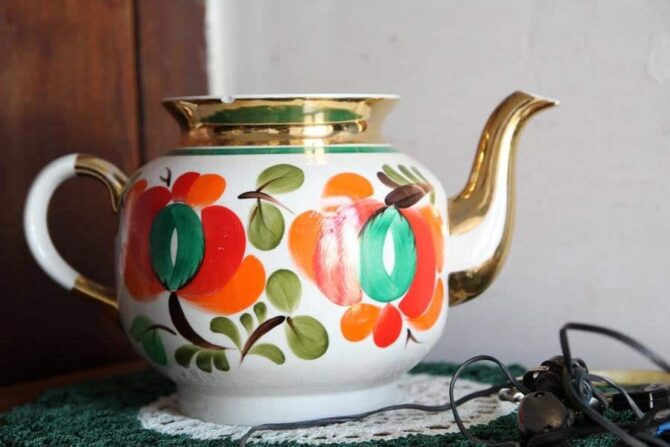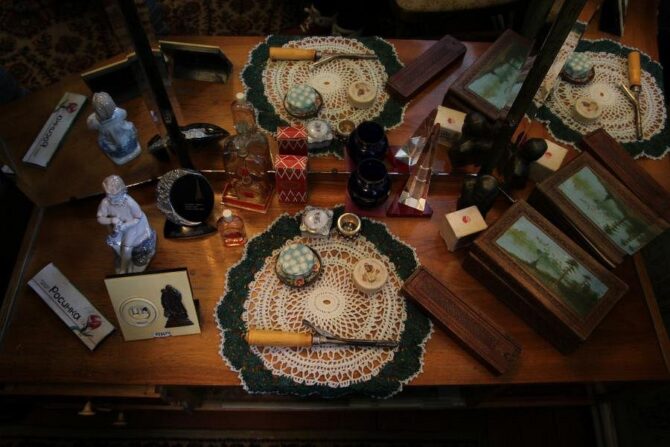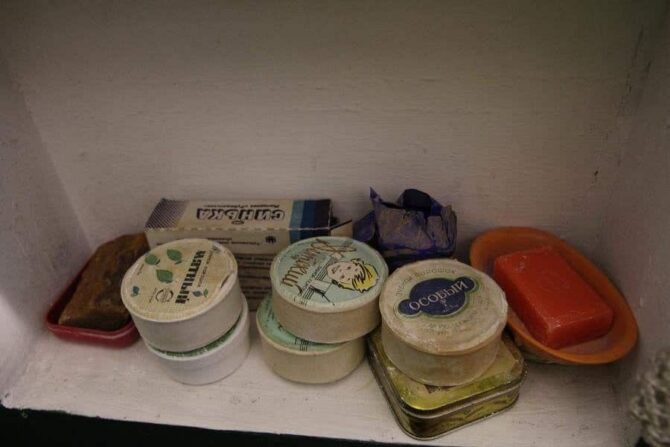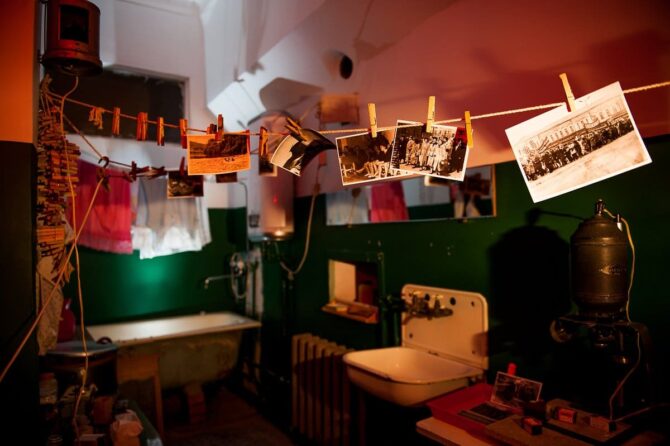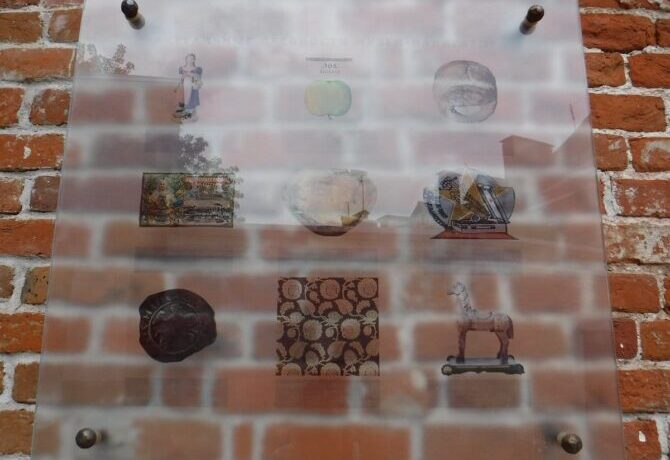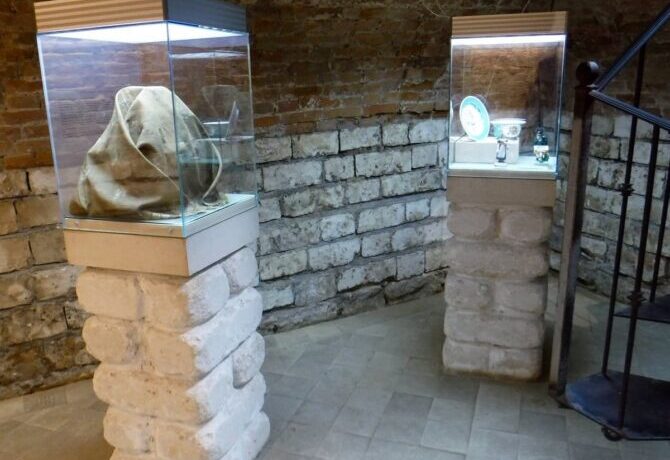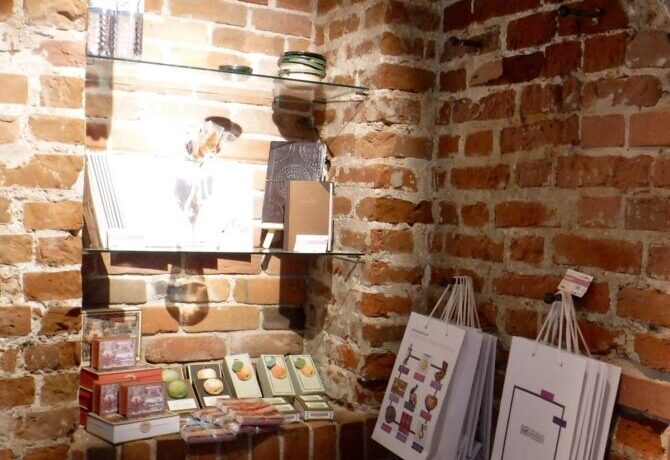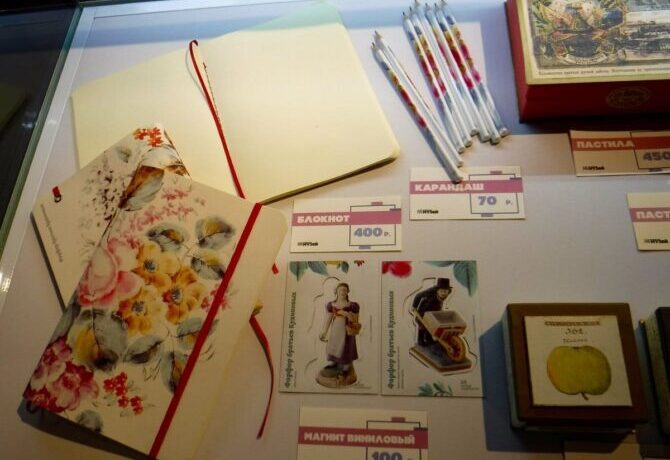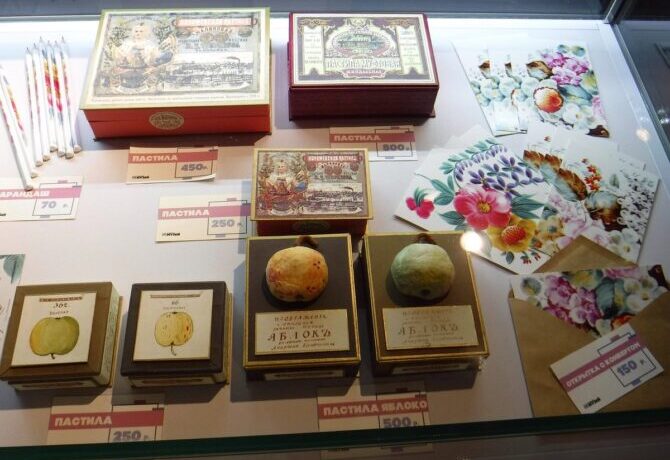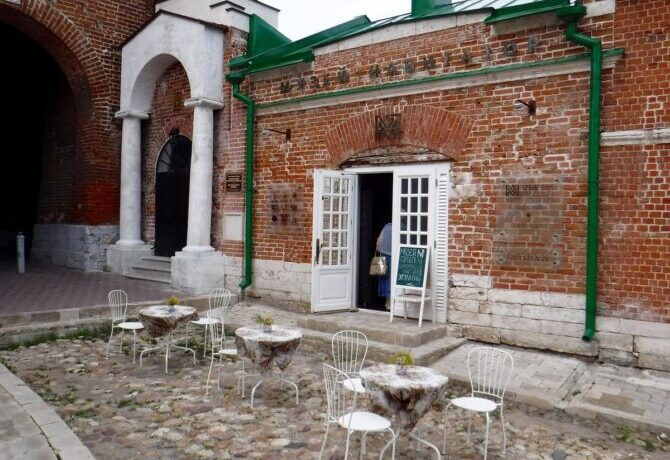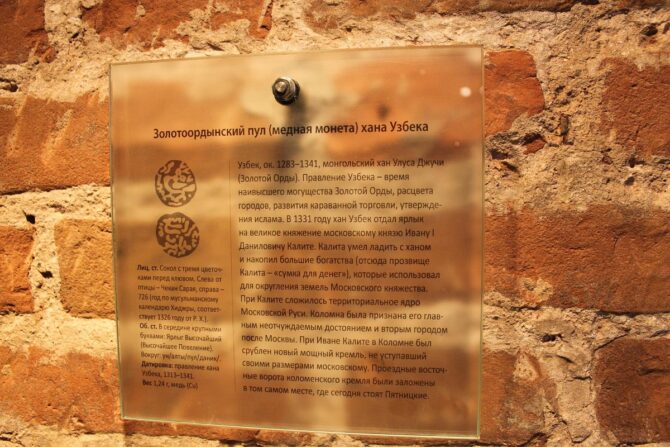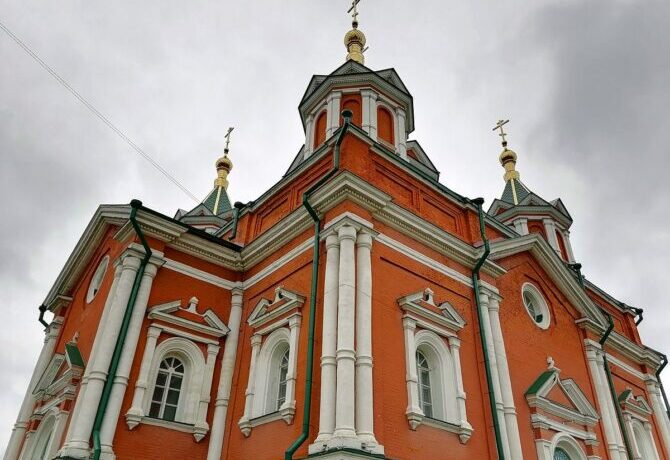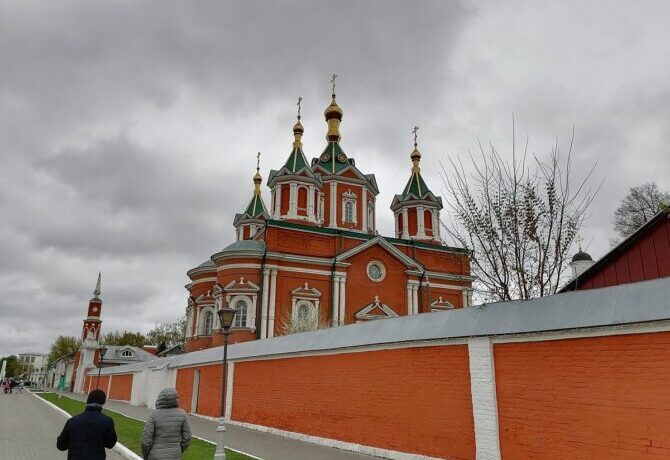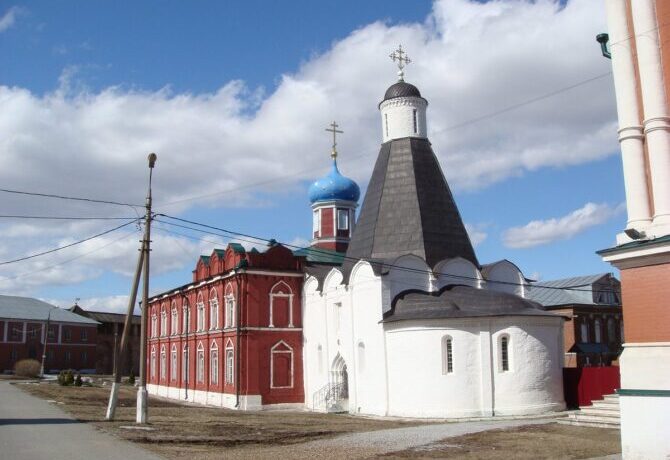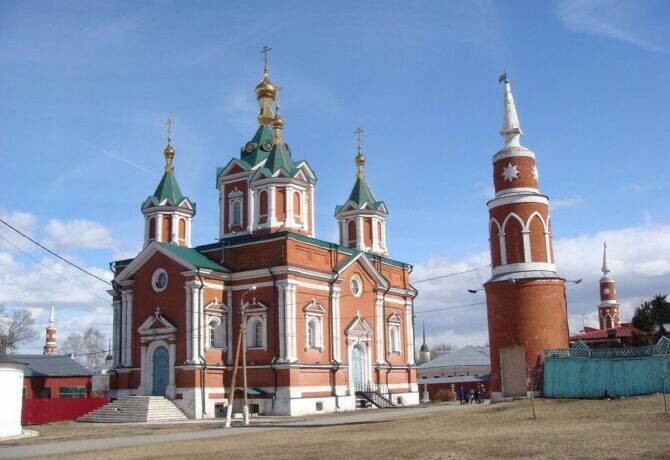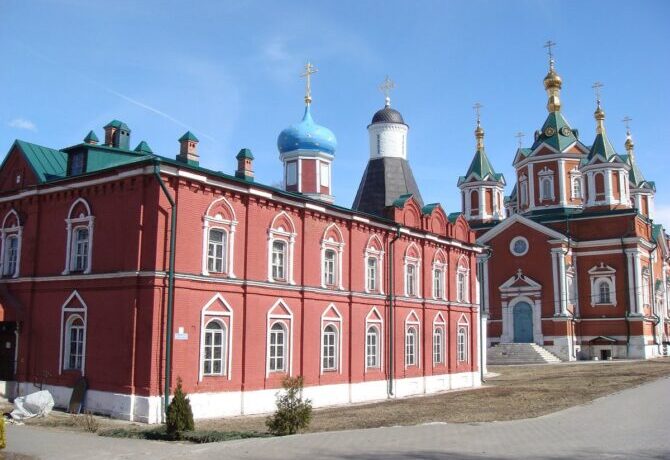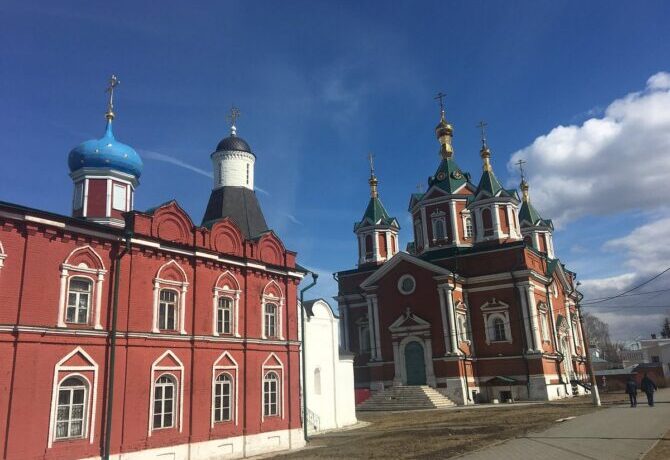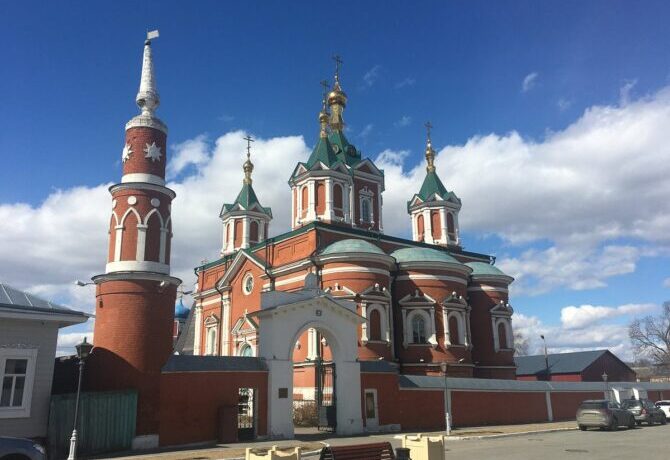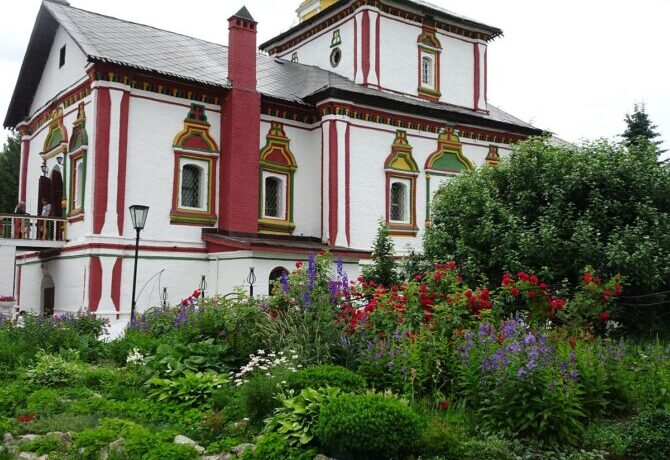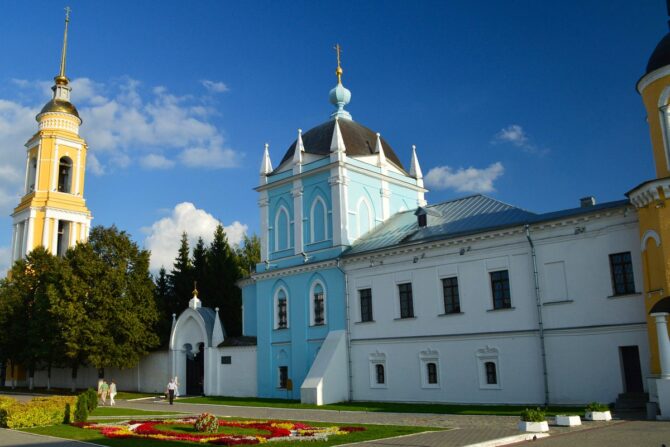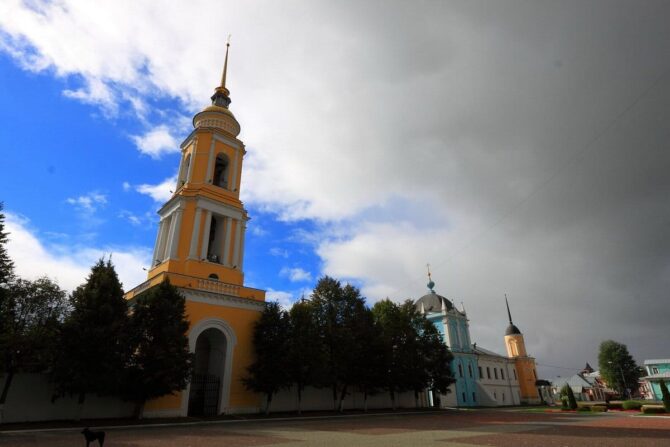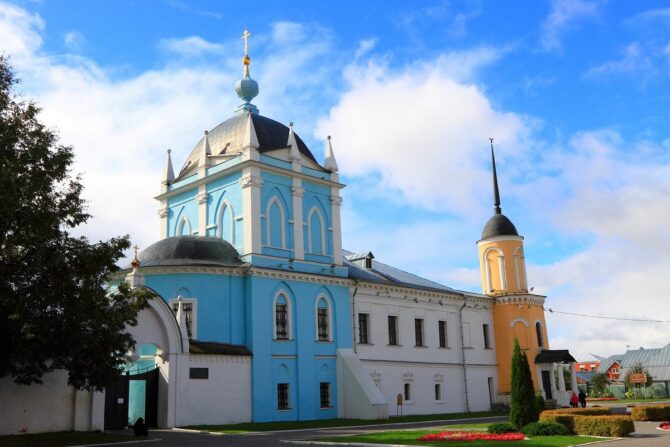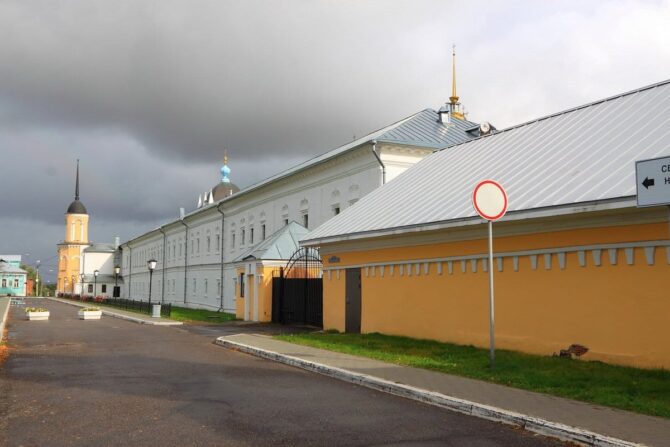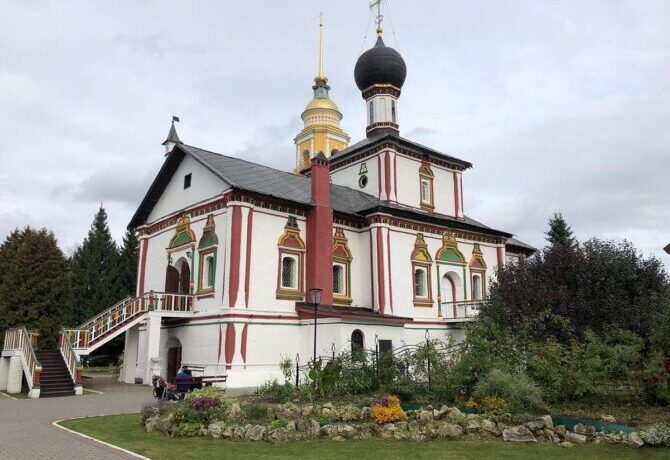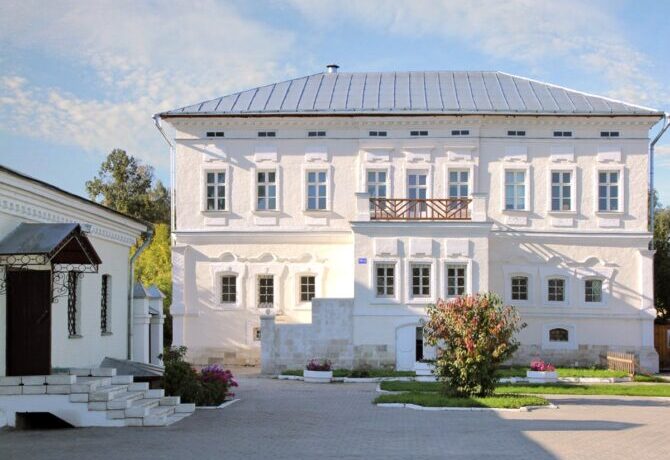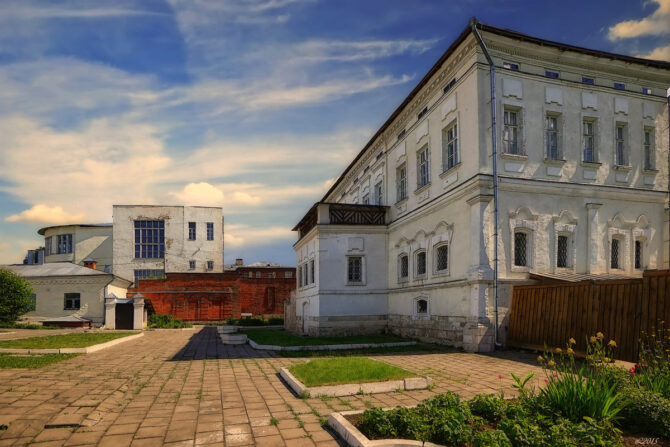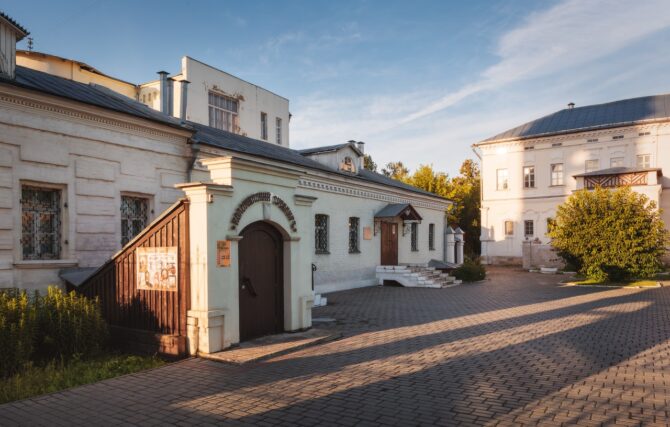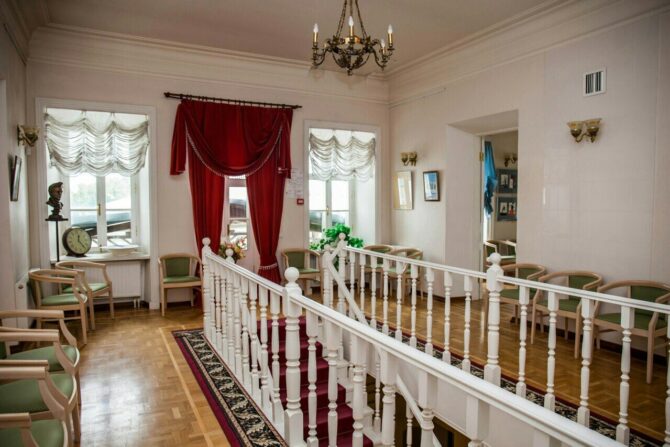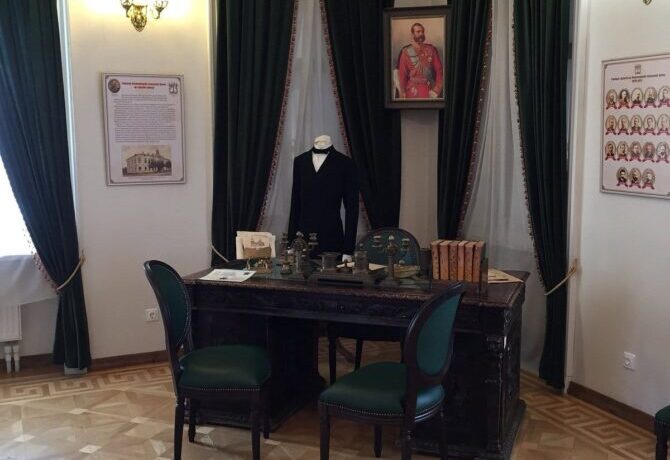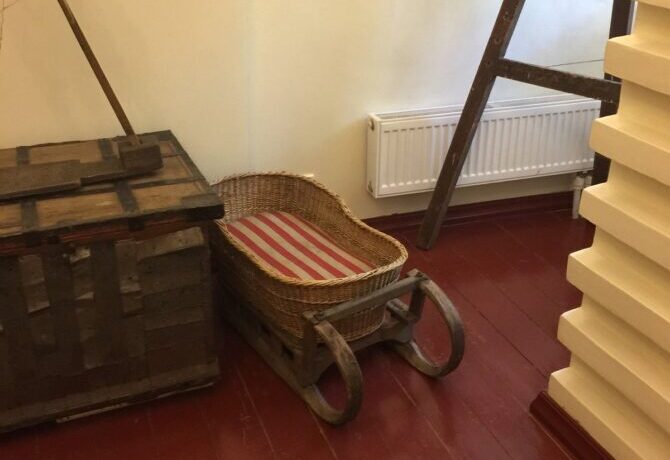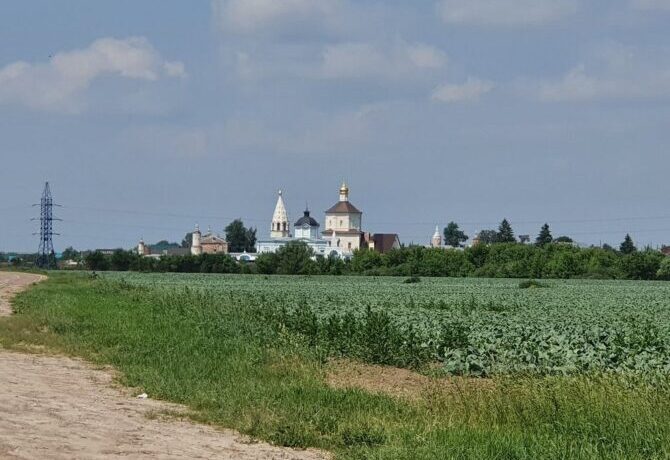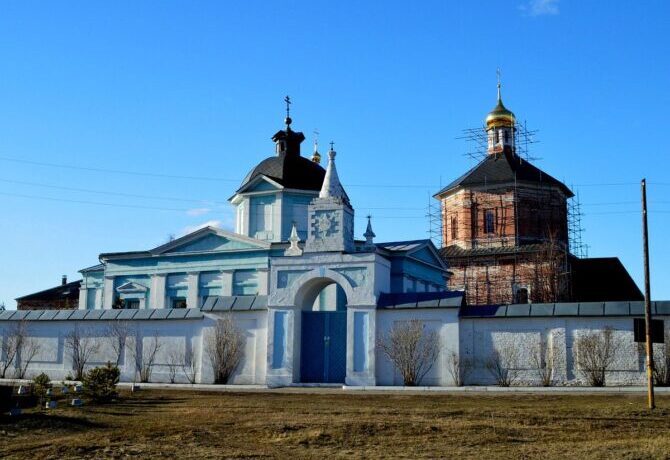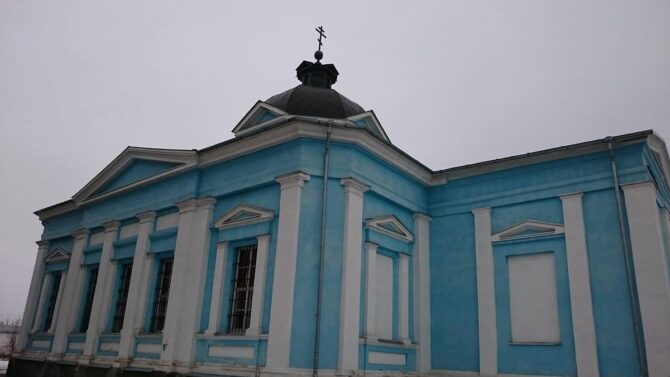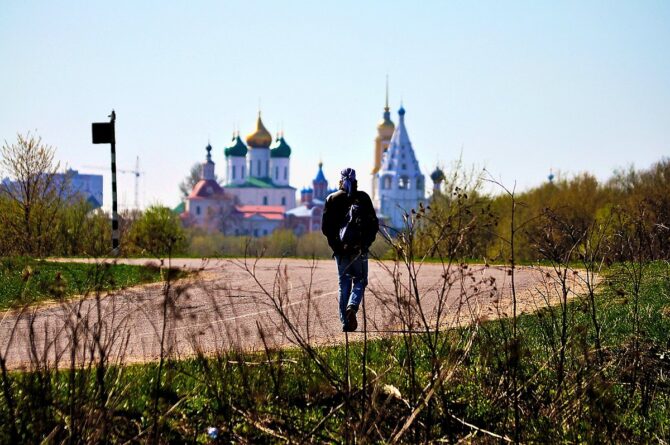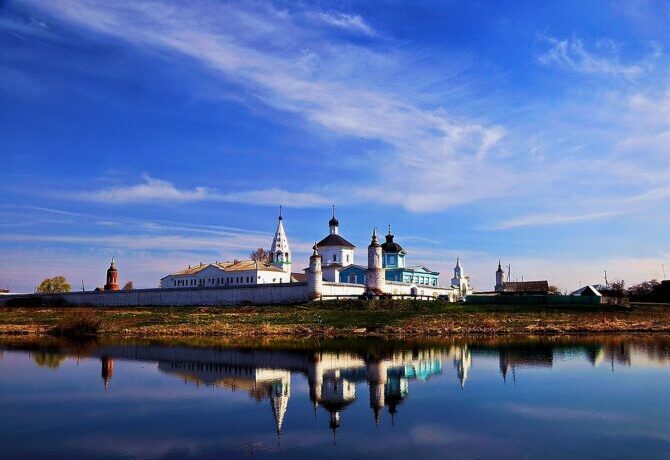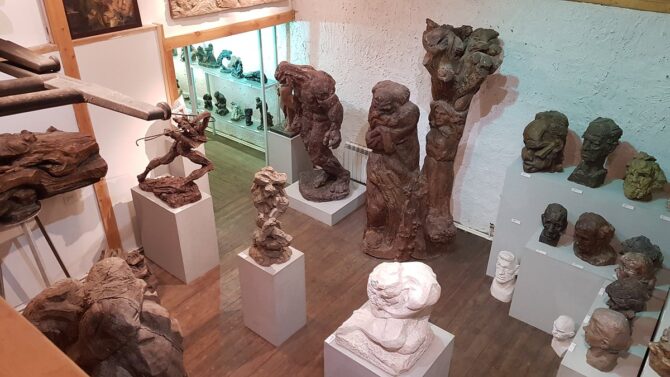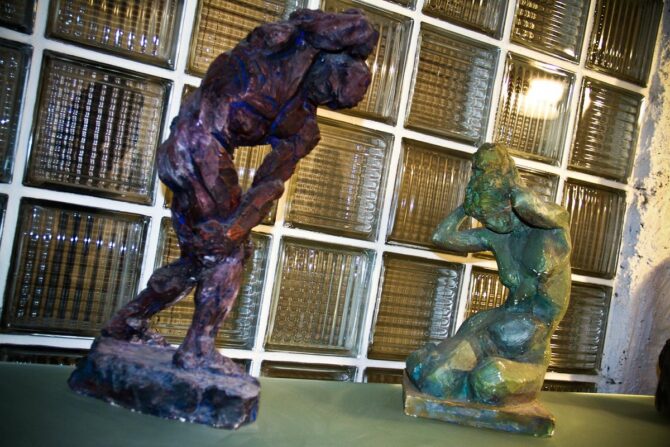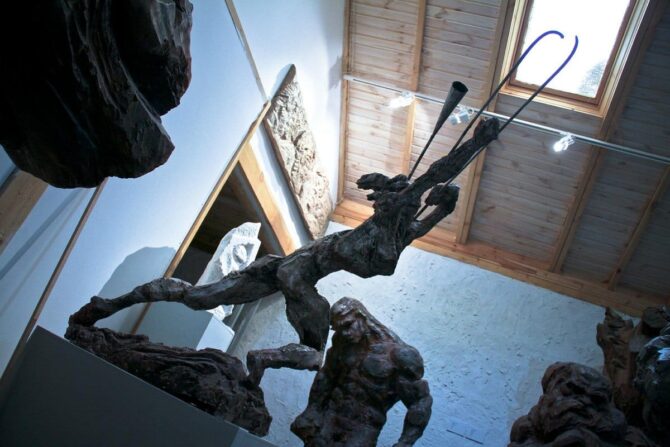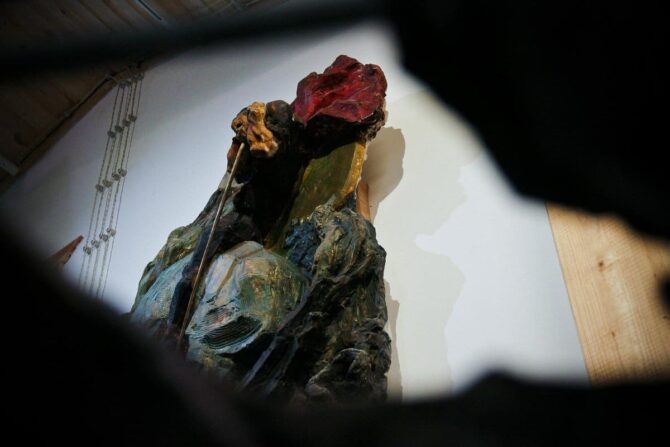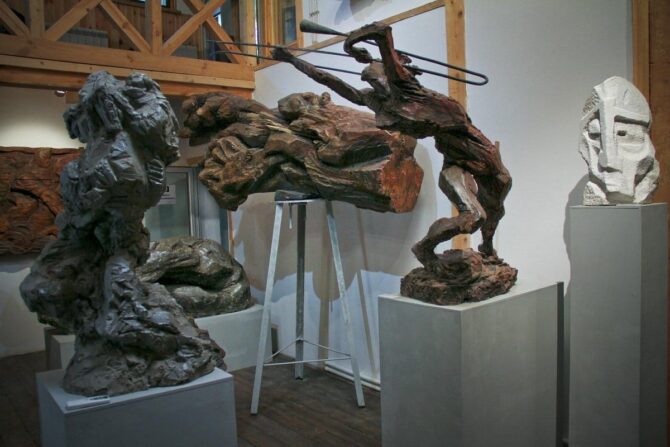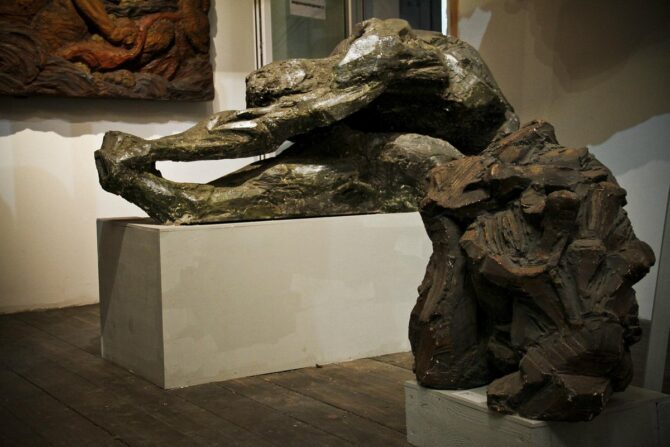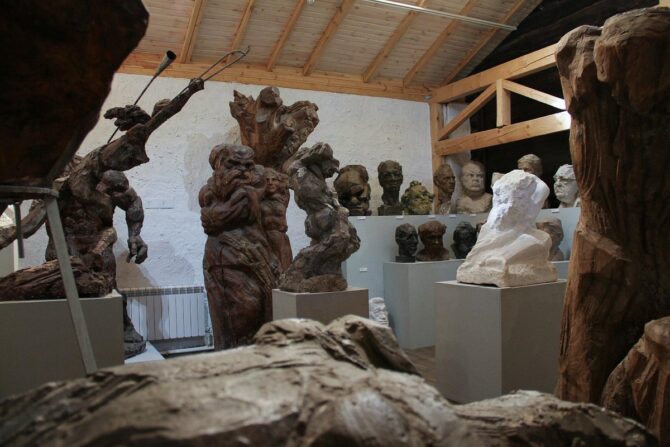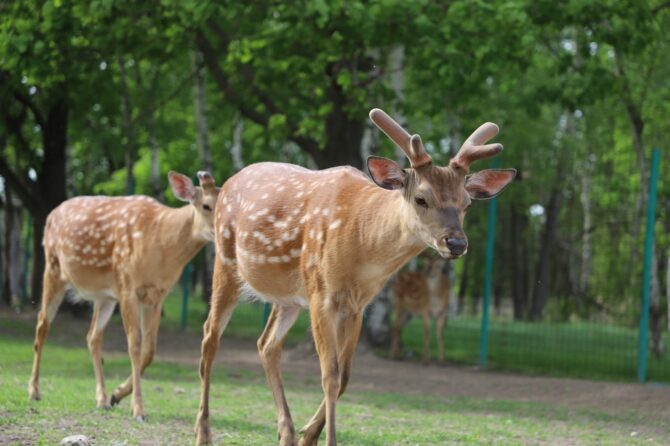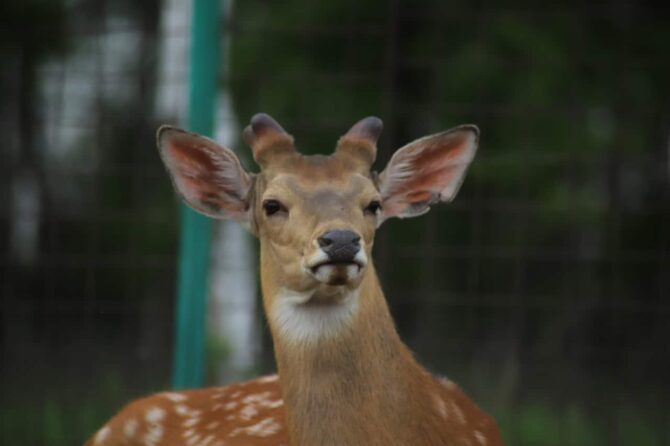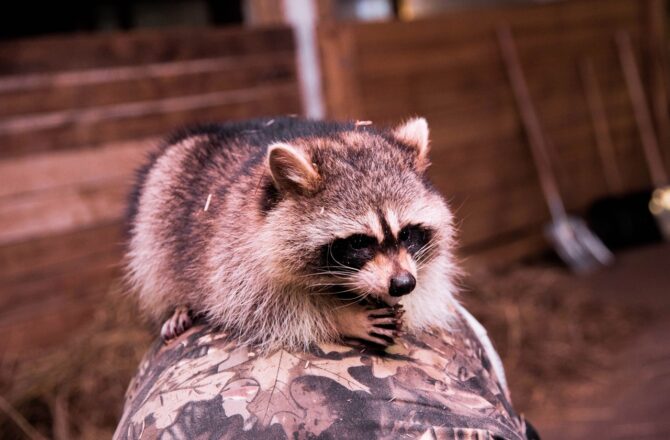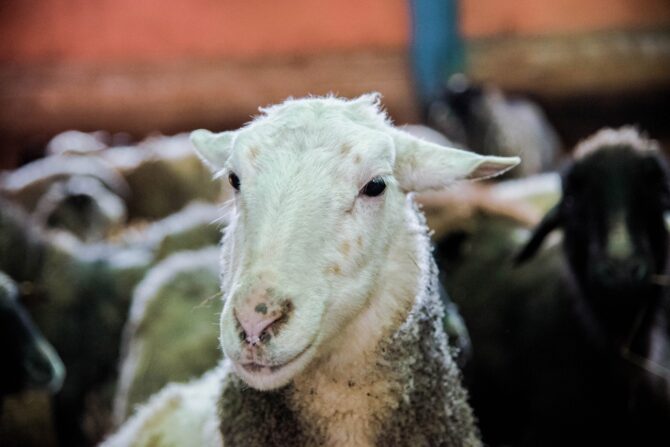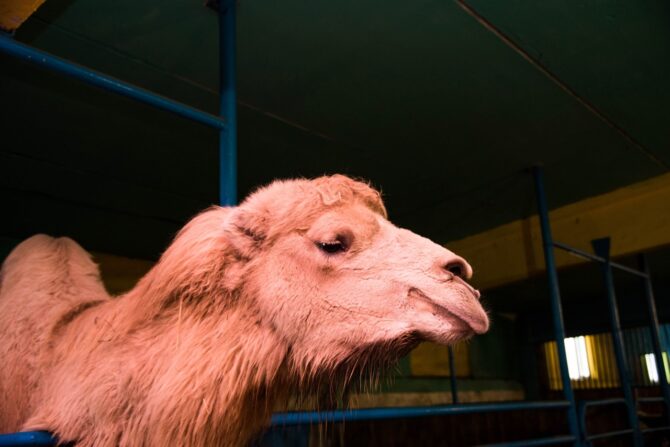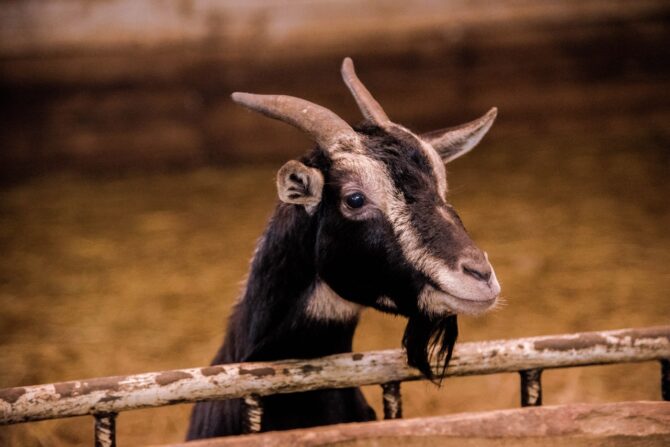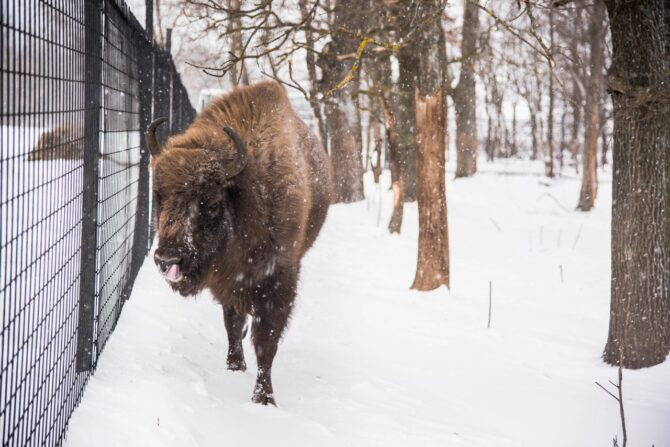Kolomna boasts a large number of thematic museums. These sights will acquaint you with the spirit and life of this Russian city. The oldest city of the Moscow region Kolomna is located 100 km from the capital. It was founded between 1140 and 1160 and was first mentioned in the annals in 1177. A large number of architectural monuments, temples, historically significant objects have been preserved on the territory. People come here for the weekend to get acquainted with the history of the appearance, formation, flourishing of the Moscow principality, and then the Russian state. In Kolomna there are good hotels. Some of them provide breakfast, which is important for the traveler. It is advisable to book rooms in advance.
- 1 Attractions Kolomna on map
- 2 Kolomensky Kremlin
- 3 Kalachnaya Museum-Shop
- 4 Bobrenevsky Bridge
- 5 Church of Nikola on Posad
- 6 Museum pastila factory
- 7 Boat trip
- 8 Museum of the Mystery of Kolomna Mead
- 9 Kolomensky Gramophone Museum
- 10 Museum “Kuznechnaya Sloboda”
- 11 Museum workshop “House of Posad Crafts”
- 12 Museum of soap “Fragrant joys”
- 13 Confectionery kuhmeister P. P. Shvedov
- 14 Museum-estate “Samovar House”
- 15 Museum-residence “Artkommunalka. Erofeev and Others»
- 16 Museum of the Beginning “This Money Kolomsky”
- 17 Brusensky Convent
- 18 Holy Trinity Novo-Golutvin Monastery
- 19 Manor of merchants Lazhechnikov
- 20 Bobrenev Monastery
- 21 Museum-workshop of Nikolay Abakumtsev
- 22 Petting zoo “Gorki”
Attractions Kolomna on map
Kolomensky Kremlin
The excursion of the first day is best to start with the Kolomna Kremlin. It was built from 1525 to 1531 and at one time represented a large and powerful fortress. These were the times of the reign of Vasily III, when Pskov and Novgorod had already joined the Moscow principality, and the question arose to strengthen its southern borders. The borders suffered from constant raids of the Tatars of the Crimean and Kazan khanates. In Kolomna there were fortifications that burned down during the fire of 1483. When in 1521 another raid of the Crimean Khan Giray completely devastated the city, it was decided to protect it with a strong stone wall with observation towers. The walls with a height of 18 to 21 meters stretch for 1 km 940 m. 16 towers with a height of 30 to 35 m were built. According to the results of the contest “Russia 10” in 2013, the Kolomensky Kremlin became the winner in the selection of visual symbols of Russia.
When the defense of the borders became irrelevant, the walls and towers began to be dismantled by the population for personal construction needs. Vandalism was stopped by Emperor Nicholas I, who issued a decree of 1826 prohibiting the looting of ancient architectural monuments. Thanks to this, part of the Kremlin has survived to this day. 7 towers survived, including the Pyatnitsky Gate, one spinner and two fortress walls. On the territory there are the Assumption Cathedral with a bell tower, Novogolutvinsky and Uspensky Brusensky convents, Resurrection, Tikhvin and Holy Cross churches, the Church of St. Nicholas Gostiny.
Almost all of these architectural objects create the ensemble of cathedral square, located inside the Kremlin. From the square itself there is a view of the Bobrenev Monastery, located 3 km from Kolomna. Near the Kremlin there is a public transport stop “Bus Station Staraya Kolomna”, where buses 1, 3, 5, 6, 7, 11, 14 stop. Hotels in the city are usually located near the transport passenger routes, so administrators will tell you how to get to this or that object better and faster.
Address: 5, Lazhechnikova St., Kolomna, Moscow Region, Russia
Kalachnaya Museum-Shop
Near the Pyatnitsky Gate there is an old shop “Kolomensky Kalach”. The building was built in the 19th century on the street leading to the largest port on the Moscow River, where flour was supplied. The street until 1945 was called Khlebnoy. In 2013, a unique museum appeared here, which contains recipes for cooking traditional Russian pastries. Kalachi bake dough put on a hand-made sourdough. Visitors are waiting for a theatrical excursion, a master class on cooking kalacha, tasting with tea drinking. Master classes are held only on weekdays, pastries in the shop can be purchased daily. The ticket price varies from 300 to 500 rubles Kalachi, papushniki, rye boiled bread, butter pretzel and other goodies are sold at an affordable cost (50-100 rubles). Kalachnaya shop is a kind of launching pad in the “museum quarter” of the city.
Address: 14, Zaitseva St., Kolomna, Moscow Region, Russia
Bobrenevsky Bridge
From the Kalachnaya shop God himself ordered to go down to the Moscow River. There is a drawbridge on pontoons. If you get to its wiring, you can make interesting photos. Initially, there was a ferry crossing, as evidenced by the drawing of the artist M.F. Kazakov, made in 1778. Then a 65-meter pontoon bridge was installed, consisting of 3 parts. He was bred when it was necessary to miss water vessels. Until 2000, not only people walked on it, but also cars drove. In 2012, a new bridge was installed to replac the dilapidated bridge. While the movement of traffic on it is prohibited. The district administration is petitioning for its resumption, but residents and the mayor’s office want to leave the historic center without car traffic.
Address: Kolomna, Moscow Region, Russia
Church of Nikola on Posad
The Russian snow-white church attracts the eyes of every tourist. This is one of the oldest temples of Kolomna, built in the 16th century. In 1716-19 it was rebuilt at the expense of parishioners. In terms of architecture, it is a typical merchant church, created in the style of Russian patterning. The artistic concept includes intricate external forms, an abundance of decorative elements, a complex composition and picturesque silhouette. The exterior décor has been restored almost completely. Unfortunately, in the Soviet period, icons and wall paintings were completely lost, and only the lower tier remained from the tent bell tower. In the 90s, the city administration transferred the temple to the Old Believer community. The distance from the Bobrenevsky Bridge to the temple is about 900 meters (10 minutes walk).
Address: 18, Posadskaya St., Kolomna, Moscow Region, Russia
Museum pastila factory
A 5-minute walk from the Church of St. Nicholas on Posad along Arbatskaya Street (400 m) is the Museum Factory of Kolomna Pastila. It is also called the “museum of disappeared taste”. The opening took place in 2009. A landmark and an additional attraction will be the sculptural composition “Shevlyaginskaya Basseyka” installed nearby. This is a kind of monument to the local water supply. Behind the gates, made in the traditional style of the 19th century, there is a factory where they cook, show and give to try the classic delicacy – pastila. It is produced in three types – dense, protein and protein-free. For visitors, an excursion to the laboratory, production hall, and ends with a tasting with tea drinking. At the exit there is a shop that sells all kinds of sweets produced at the factory.
Address: 4 Polyanskaya St., Kolomna, Moscow Region, Russia
Boat trip
You can finish the first excursion day by boat along the Moskva River. There are two routes – upstream with a view of the Cathedral Square from the water; down to the confluence of the Moskva River with the Ica. The standard duration of the walk is an hour and a half. Ships depart from the pier twice a day on Saturdays and Sundays, on Friday only the evening version is available.
In the evening, a special life begins in the city – restaurants, nightclubs, entertainment programs are held. Guests are always waiting for the best (according to travelers) hotels in the city – “Kolomna 3 stars”, “40th meridian Arbat”, “Soviet”. All of them are located in the center of Kolomna, 1-5 minutes from the stop “Soviet Square”.
Address: 12, Vodovozny Lane, Kolomna, Moscow Region, Russia
Museum of the Mystery of Kolomna Mead
The next day can be devoted to the museums of the city. Start or end the walk with a visit to the “Museum of the Mystery of kolomna mead”, it is up to the tourists themselves. It should be borne in mind that, in addition to the excursion to the cellars, guests will enjoy tasting honey drinks. Kolomna from time immemorial was the center of beekeeping. Traditions and ancient recipes of mead making are still preserved here. As virtual guides will be a housekeeper, a mead and a bortnik. Then, together with the sbitenshchik, visitors themselves will prepare a spicy sbiten according to a recipe known since the time of Dmitry Donskoy. This low-alcohol drink regaled guests at the wedding of the Moscow prince with Princess Evdokia. Meads at the tasting are served in 4 shifts. Among them is an alcohol line. At the exit of the museum there is a store “Golden Hive”, where you can buy drinks for yourself or as a gift to friends. Tickets from 250 to 350 rubles Nearby is a transport stop on demand “Square of two revolutions”.
Address: 184, Oktyabrskaya Revolyutsii St., Kolomna, Moscow Region, Russia
Kolomensky Gramophone Museum
A six-minute walk (500 m) from the museum “Secrets of Kolomna Mead” is another unique museum. It is dedicated to the history of the Kolomensky plant of portable gramophones. The exhibition presents a collection of various gramophones, music boxes on metal discs, Edison’s phonographs, gramophones of the Paté brothers. Here you can listen to old gramophone recordings on records. For this purpose, a special listening room is equipped on the 2nd floor. The opening date of the museum on May 1, 2017 was not chosen by chance. On this day in 1934, the first Kolomna gramophone was assembled. The plant’s products have received all-Union recognition and today are a rarity.
Address: 3a Lazhechnikova St., Kolomna, Moscow Region, Russia
Museum “Kuznechnaya Sloboda”
Then the way will pass to the Forge Sloboda in a unique museum of blacksmithing. It occupies a two-story historical building, which presents more than 7 thousand exhibits made by the hands of local masters. The fund is based on the private collection of Ilya Georgievich Lebedev. Basically, these are forged products, as well as things made with the help of casting. Improvised wooden objects for several hundred years. In the halls there are weapons, armor of warriors of past centuries, forged household utensils, bells, horse harness. Blacksmiths in front of visitors make new items, sharing the secrets of blacksmithing. In the shop at the museum you can buy forged souvenirs for your loved ones or for yourself in memory of Kolomna.
Address: 84, Grazhdanskaya St., Kolomna, Moscow Region, Russia
Museum workshop “House of Posad Crafts”
You can continue your acquaintance with Koloma handicrafts in the museum workshop “House of Posad Crafts”. From Kuznechnaya Sloboda you need to walk along Yana Grunta Street in the direction of the Moskva River, go to Posadskaya Street. The museum workshop was created in the house of merchants Makarov. The building was built in the 19th century and was completely renovated by a family of private entrepreneurs. They also opened a museum exhibition based on their own collection of handicrafts. Among the exhibits are clothes of past centuries, including wedding dresses, antique spinning wheels, dolls, household utensils and textiles. The continuation of the exposition is in the courtyard. Here are accessories for blacksmithing. In addition to the tour, the museum staff offers master classes in blacksmithing and pottery, making dolls-motanok, artistic modeling from clay, phyto-collage and decorating candles. Not only adults, but also children come here with pleasure.
Address: 12, Posadskaya St., Kolomna, Moscow Region, Russia
Museum of soap “Fragrant joys”
Further along Pushkin Street you can walk to Zaitsev Street to visit another unusual museum “Fragrant Joy”. This is a private soap factory restored according to the projects of the century before last with a shop, a salon and a basement, where a packaging and pantry is located, equipped on the model of a merchant shop. In the salon on the 2nd floor there is a collection of pre-revolutionary cosmetic items. Theatrical excursions are held here, which immerse visitors in the atmosphere of the 19th century with its aromas, cosmetic secrets, stories about the era. The shop sells fragrant soap produced in the museum manufactory, as well as souvenirs made in the spirit of the century before last. Fragrant manufactory products, produced according to ancient recipes, will appeal to absolutely all visitors. It is packed in vintage boxes, tied with ribbons. Gift sets are completed by themes – bath accessories, with quotes from Russian classics, miniatures with children’s counting, music boxes, etc.
Address: 18, Zaitseva St., Kolomna, Moscow Region, Russia
Confectionery kuhmeister P. P. Shvedov
In the next house there is a unique confectionery, in which sweets are made according to ancient recipes. Guests will find a fascinating theatrical excursion, in which guides to the pages of the history of European sweets will be the daughter of V.P. Shvedova is a gymnasium student Masha and a German confectioner Gustav Karlovich. They will tell and show how the famous Kolomna sweets were born, and at the end of the program everyone is waiting for tea, coffee or cocoa with a treat. It is believed that the predecessors of Russian sweets are candied fruits. Well, how they were used by confectioners of the century before last, it is best to find out in the museum shop. On sale are the author’s sets “The Nutcracker and the Mouse King”, “Gala Mixture”, “Onegin”, “Orange Bars”, “Kolomna Melody”, “Bird Trills”, “Loaves de Graglier” and other sweets made from natural ingredients.
Address: 18a Zaitseva St., Kolomna, Moscow Region, Russia
Museum-estate “Samovar House”
Leaving the confectionery, you need to walk along Pushkin Street to Posadskaya. Here, almost at the crossroads, there is the famous “House of the Samovar”. A successful object to complete a kind of “gastrotour”. Here is exhibited a private collection of the Burov family. It has more than 400 copies of samovars of various suits and brands. Collectors collected them in all Russian regions, even going around abandoned villages. Together with samovars, they brought other household utensils. Therefore, next to the “pot-bellied” exhibits there are old meat grinders, rolling pins, kerosene lamps and even antediluvian juicers. Each exhibit has its own history. The tour continues in the next room, in which a real Russian stove is built. The interior is completely stylized as a rustic hut. Here you can lie on the fields, put a pot of porridge in the oven, of course take a picture. The souvenir shop offers a large selection of gingerbread, samovars and other items of Russian tea drinking. Well, you can drink tea and dishes from the oven in a cozy café at the museum.
Address: 11, Posadskaya St., Kolomna, Moscow Region, Russia
Museum-residence “Artkommunalka. Erofeev and Others»
Not all the sights of Kolomna belong to the centuries before last. After a delicious lunch with tea drinking, it is worth walking to the museum-residence “Artkommunalka” to switch a little from the values of the 19th century to the quirks of the 20th. The path will pass along Yana Grunt Street to the October Revolution Street. Here, in the house No. 205, a state art project dedicated to the creative searches of Venedikt Erofeev and other figures of contemporary art is implemented. The opening of the exhibition was not accidentally timed to coincide with the anniversary of Nikita Khrushchev’s visit to the exhibition of avant-garde artists. On December 1, 1962, he crossed out the life, career and faith in his own success to a good ten representatives of modern art trends in art with one phrase. Venedikt Erofeev that year became a student of the Kolomna Pedagogical Institute, at the same time he worked as a loader at a local meat processing plant. In the house where the museum is now open, he lived, and on the first floor there was a wine and vodka department of the deli. It was here that Venichka, expelled from the Pedagogical Institute, firmly decided to give himself to literary creativity. He returned here more than once for inspiration, so the museum is called his residence. The exposition is decorated in the form of a communal apartment. The exhibitions feature works by resident artists of the museum.
Address: 205 Oktyabrskaya St., Kolomna, Moscow Region, Russia
Museum of the Beginning “This Money Kolomsky”
Back to the Kolomensky Kremlin. In the Pyatnitskaya Tower there is a museum of money. The exposition presents coins, banknotes, other means of payment that went on the territory of Kolomna from antiquity to our times. The basis of the fund is the private collection of local historian Mikhail Amosov. One of the exhibits is the real ruble, which came from the word “chop”. This is a 200-gram silver hryvnia, cut off from a single bar with an axe. It also stores the first coin minted in the 14th century, the money of the Golden Horde with the stamp of Batu Khan, the money of Vasily III, the pool of Uzbek Khan. There are also fake money of the 14-15 centuries. The collection includes not only numismatics. Here are earrings, buckles, rings and other jewelry and accessories of past centuries. The concept of the museum is interesting. Here it is proposed to look at the history of money from the perspective of military campaigns and victories from the times of Dmitry Donskoy to Ivan the Terrible. After all, it was from the Pyatnitsky Gate that the army went to war.
Address: 14, Zaitseva St., Kolomna, Moscow Region, Russia
Brusensky Convent
The Assumption Brusensky Convent resumed its work in 1997. In 2006, the restoration of his Holy Cross Cathedral was completed. The place is interesting for its history and shrine. The monastery was founded in 1552 and originally it was inhabited by male nuns. In the Time of Troubles, the monastery was badly damaged. After its restoration, the nun sisters came to live in the territory. On their initiative, buildings were built, which today are objects of cultural heritage: a temple, a gate bell tower, a refectory, an almshouse, residential buildings and outbuildings. Today on the territory you can visit the tent church of the Assumption of the Blessed Virgin, the Cathedral of the Exaltation of the Life-Giving Cross of the Lord. The main shrine is one of the earliest and first icons of the Kazan Mother of God.
Address: Brusensky Lane, Kolomna, Moscow Region, Russia
Holy Trinity Novo-Golutvin Monastery
On the territory of the Kremlin there is another convent – Holy Trinity Novo-Golutvin. This monastery was founded in the 19th century on the site of the former bishop’s house. In 1799, the Kolomna diocese was abolished, so the question arose how to use the existing buildings. The architectural ensemble of the monastery included the Trinity Cathedral (1705) and the Bishops’ Building (White Stone Chambers). In addition to them, the Intercession Church and the bell tower have been preserved to this day. In 2002, a chapel was erected over the holy spring. The monastery is famous for its medical center, where nuns – professional doctors serve. pilgrims who come here for help are provided with a hotel. They can eat in the refectory. Nuns are engaged in breeding rare breeds of service dogs, Vyatka horses (on the farmstead 17 km from the monastery).
The Camel Sinai lives on site. It was presented to the monastery by astronauts. On holidays, horses are brought to the city, saddle and ride children. Those who wish can also ride a camel. In the monastery shop you can buy icons, ceramics, embroideries made by the hands of a nun. The monastery took custody of the orphanage in the village of Maloye Karasevo. Nuns who serve there necessarily receive higher pedagogical education.
Address: 11a Lazareva St., Kolomna, Moscow Region, Russia
Manor of merchants Lazhechnikov
You can finish this excursion route in the estate of merchants Lazhechnikov. It is a department of the cultural and historical center “Kolomensky Kremlin”. Here spent his childhood Russian writer, creator of a series of historical novels Ivan Ivanovich Lazhechnikov. The museum is made in the format of a literary house in its classical sense. In the main house there is a central exposition called “Kolomna of the past centuries”. There is also an exhibition of kolomna painter Vladislav Tatarinov. Interactive programs “Paper Theater”, “In the Frame”Ice House”, “Lessons of Vanya Lazhechnikov”, game-quest “Message from the Depths of Centuries” have been prepared for visitors. The house is an architectural monument of the mid-18th century. The museum was opened in 2007.
Address: 192a Oktyabrskaya Revolyutsii St., Kolomna, Moscow Region, Russia
Most tourists who come by bus or train try to stay for the night closer to the historical center of Kolomna. Some, especially students, are deterred by room rates. Not far from the center there are hotels where you can spend the night, paying only 500 rubles. per day. These are the hotel “Central Estate” (900 m) and the hostel “Lastochka” (1.3 km). When planning to spend a weekend in Kolomna, you need to book places in advance.
This city is considered one of the greenest in the suburbs. There are many green corners, parks and squares. Favorite places of rest are The Peace Park, Zaitsev Square, the Park of the 50th Anniversary of October, the square “Blyudechko”. Along their alleys it is pleasant to walk, sit on benches, enjoy the silence that is not peculiar to the big city. If you have time, you can go outside the city and visit several more historically significant places.
Bobrenev Monastery
3 kilometers from Kolomna, on the other bank of the Moskva River, in the village of Staroye Bobrenevo there is a monastery. It was founded by Prince Dmitry Donskoy in 1381. Written references to it appeared in 1578. there are two legends about the laying of the monastery. One says that Dmitry Donskoy after the Battle of Kulikovo (1380) promised to build a monastery in honor of the Nativity of the Virgin. A year later, he fulfilled his promise. According to another version, the monastery was built by the repentant robber Bobren. In any case, the monastery appeared and became not only a haven for Orthodox nuns, but also a barrier for Kolomna. The monks faithfully served the city, especially during the period when Vasily III briefly made Kolomna the capital of the Moscow principality (1433). At the turn of the 19th and 20th centuries, Bobrenev’s monastic brotherhood became famous for providing medical care to all those in need. A parochial school was opened here, which operated until the closure of the monastery in 1929. In the early 90s, the monks got back their property in a deplorable state. Today, the restoration work is over. The architectural ensemble of the monastery is a two-story cathedral church with a chapel of “singing angels”. The temple received such a name because of the amazing acoustics. The bell tower, the stable yard, the cell building are also preserved and restored.
Address: Staroye Bobrenevo village, Kolomna, Moscow region, Russia
Museum-workshop of Nikolay Abakumtsev
At the dacha of the sculptor Nikolai Ilyich Abakumtsev, who was called the “artist of the future”, his museum was organized in the village of Peski. His work can be divided into two lines. For some works made in the style of socialist realism, he received money. The second revealed his creative nature. The sculptures were not like any of the works of his contemporaries. He was an innovator. After his death, there were many extraordinary sculptures that the family decided to present to the whole society. Therefore, it was decided to open a museum in the country. Part of the exposition is in the building, the other half is located in the open air.
Address: Kolomensky urban district, Peski settlement, Imperceptible, 3
Petting zoo “Gorki”
The zoo in the village of Gorki was opened in 2009. It became the first petting zoo in the Moscow region. To do this, the owners bought the farm “Maksheevskoe”, which was in a deplorable state. After the repair and installation of enclosures, African ostriches, peacocks, llamas, spotted deer, buffaloes and other animals settled here. You can not only look at them, but also take care of them (feed, stroke). A riding school is opened on the territory, an animal care center works. You can ride ponies or horses daily, except Monday, until 16.30.
Address: Gorki village, Kolomna, Moscow region, Russia
The surroundings of Kolomna are famous for their nature. You can stay outside the city. Guests will gladly receive hotels “Aerograd”, “Olympus event-complex”, “40th meridian. Yacht Club”.

